September #16: The fall
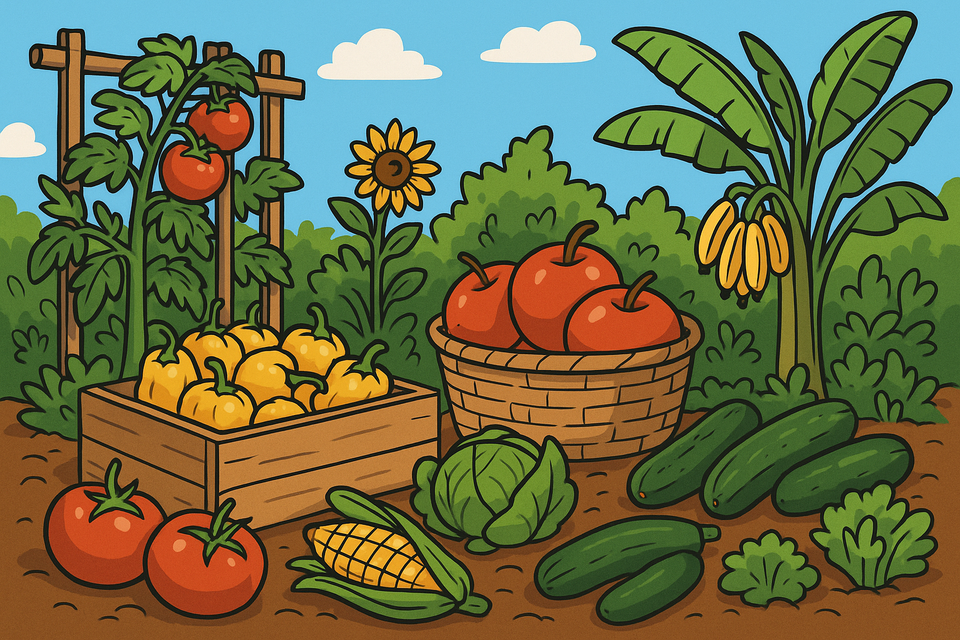
Ah, yes, September. The month when my seasonal depression usually kicks in, which is also partially why you're seeing this post well into October.
Days are significantly shorter, nights are getting colder, and you already know the inevitable is close: fall.
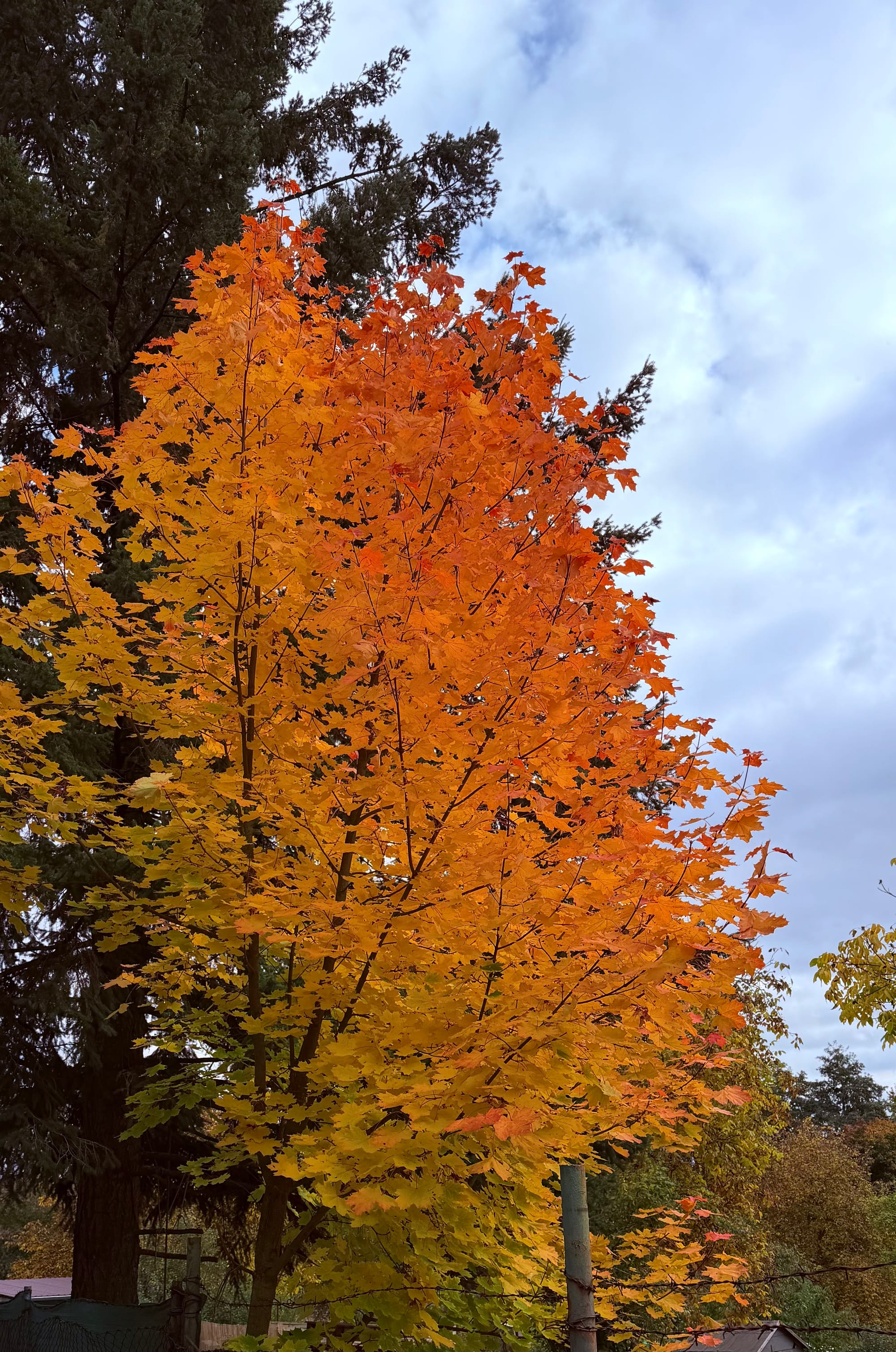
But I returned rested and energetic from my vacation. The island of La Palma was beautiful, yet challenging compared to Tenerife. The elevation made every hike, or even a short walk, feel like an accomplishment. But enough of that; back to my garden.
the yellowjacket
My beautiful yellow habanero babies. When I looked into the greenhouse, the first sight was truly satisfying.
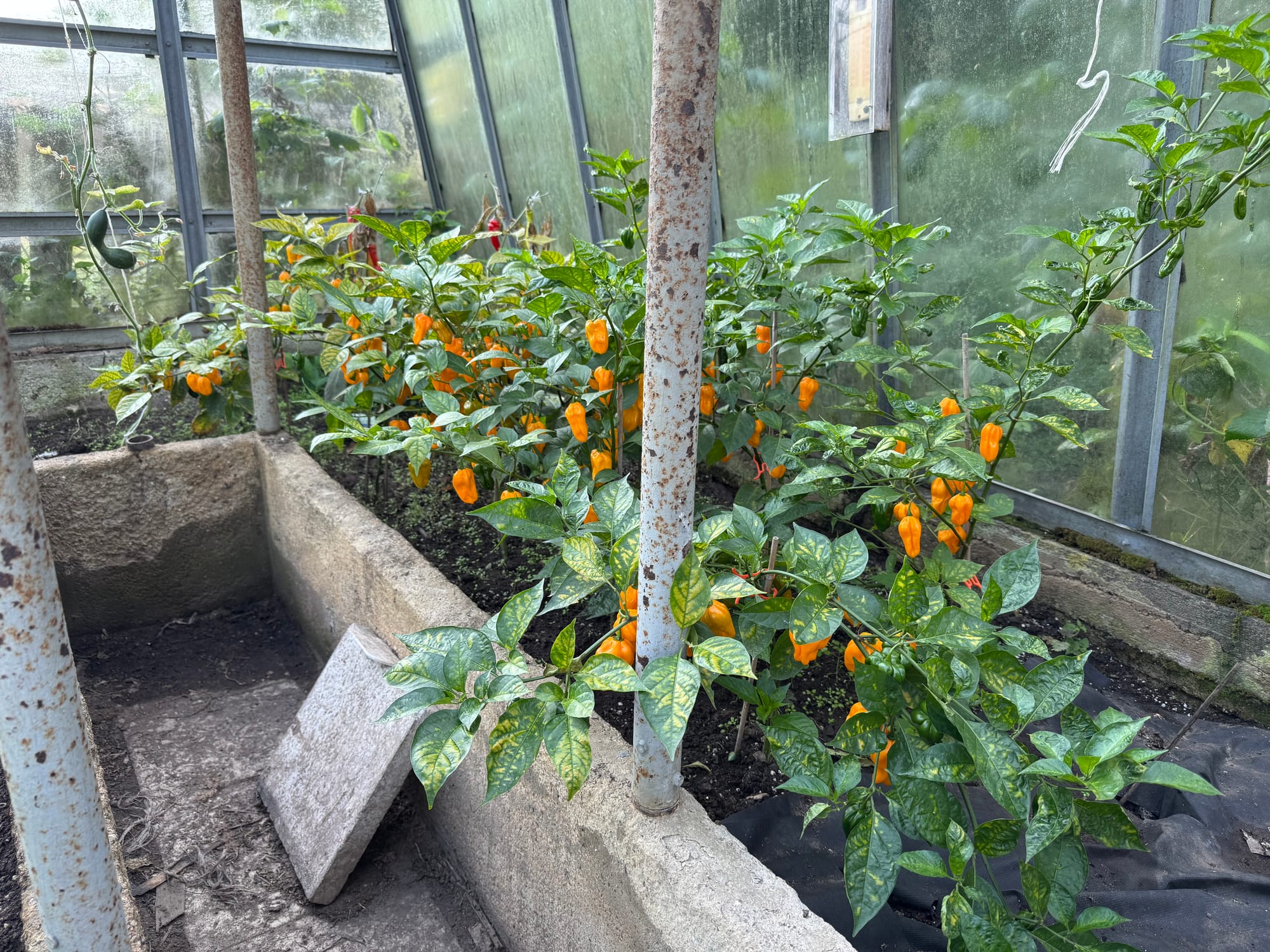
One yellow spot after another. I harvested entire plants, just snipping them at ground level and tossing the fruits directly into a box.
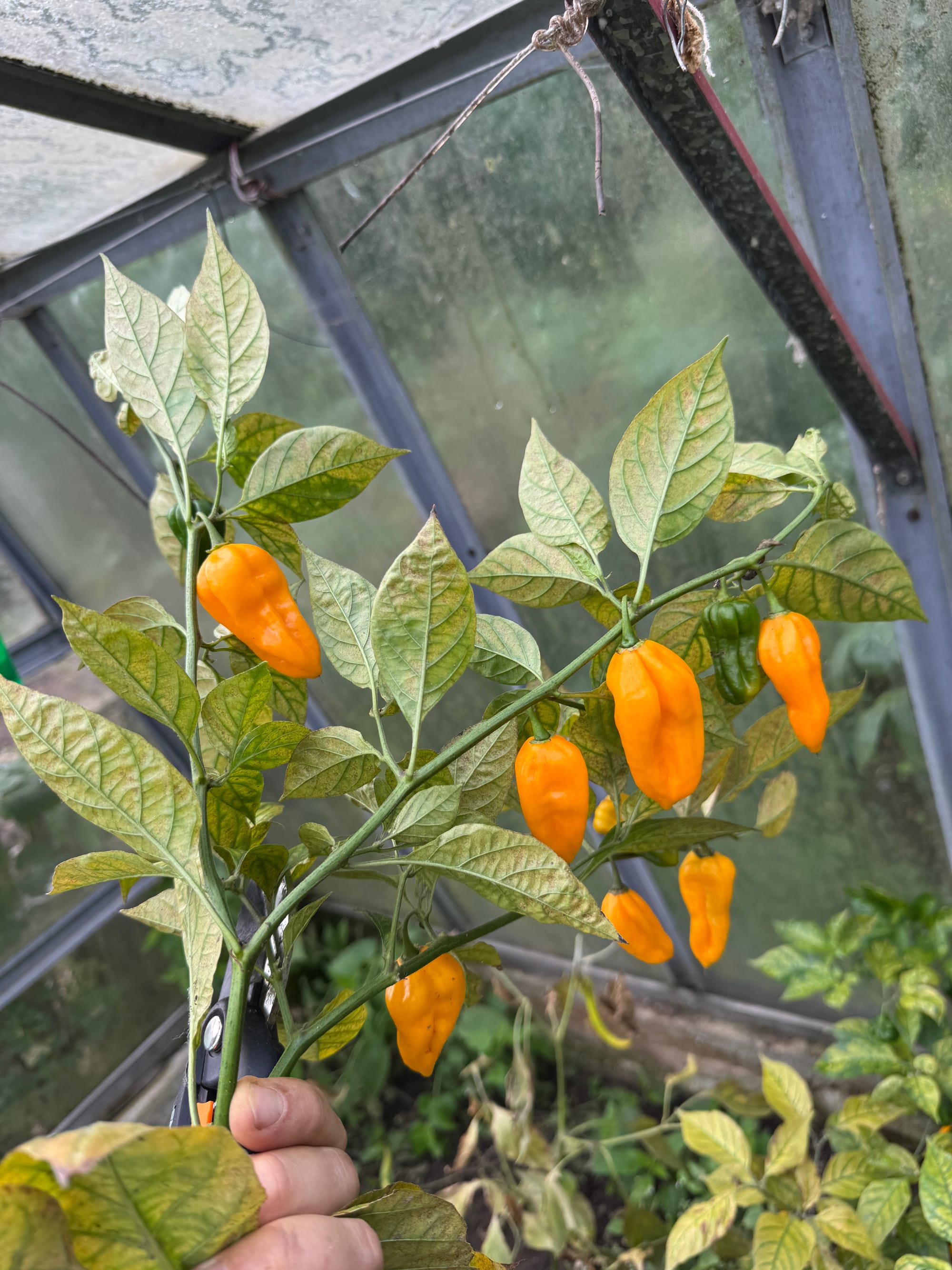
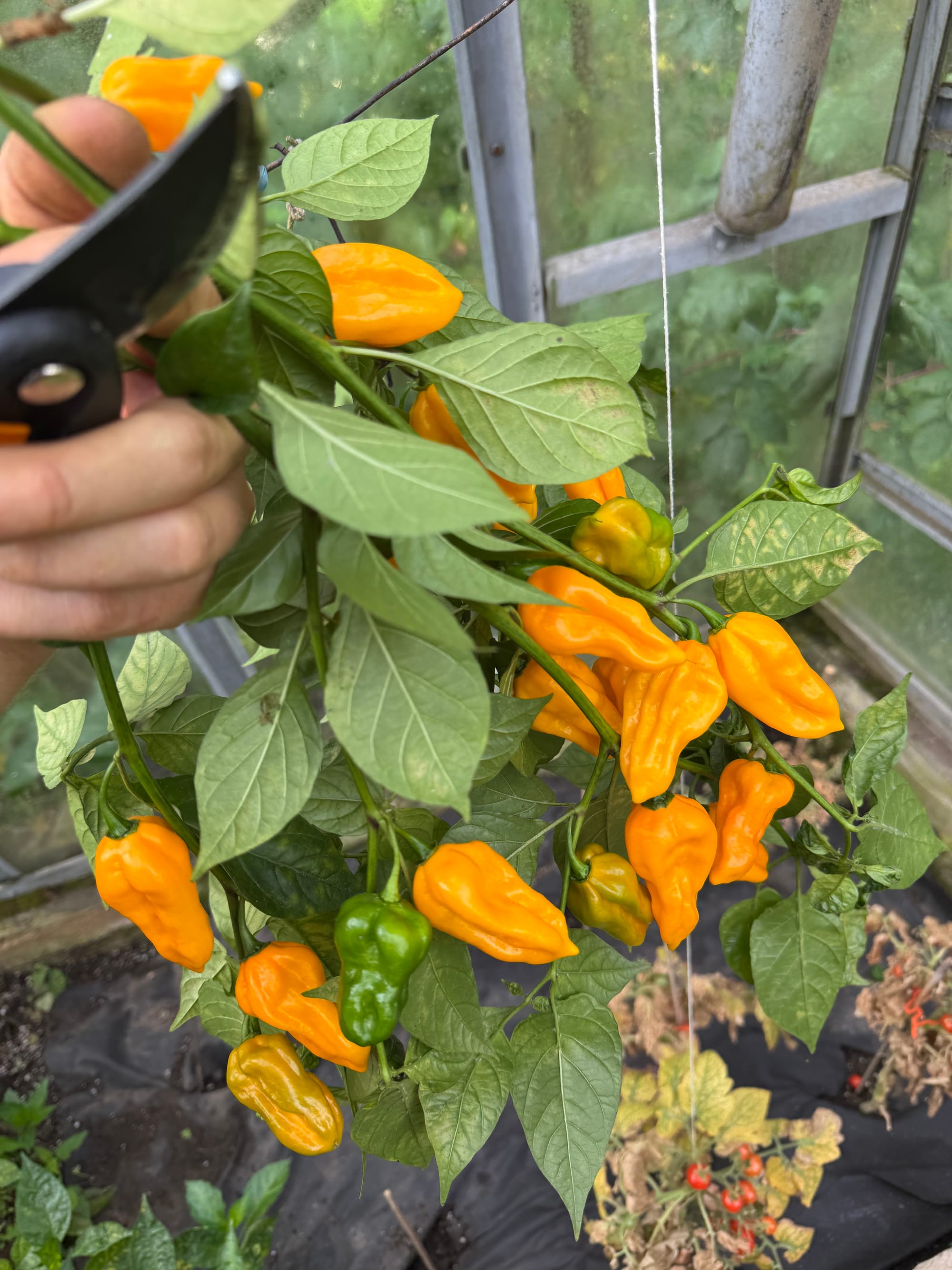
You can still see the chlorosis in the left plant.
I collected a nice amount of habaneros, considering the issues I had caused myself. A few Cayenne peppers topped it off, and the spicy season is officially done.
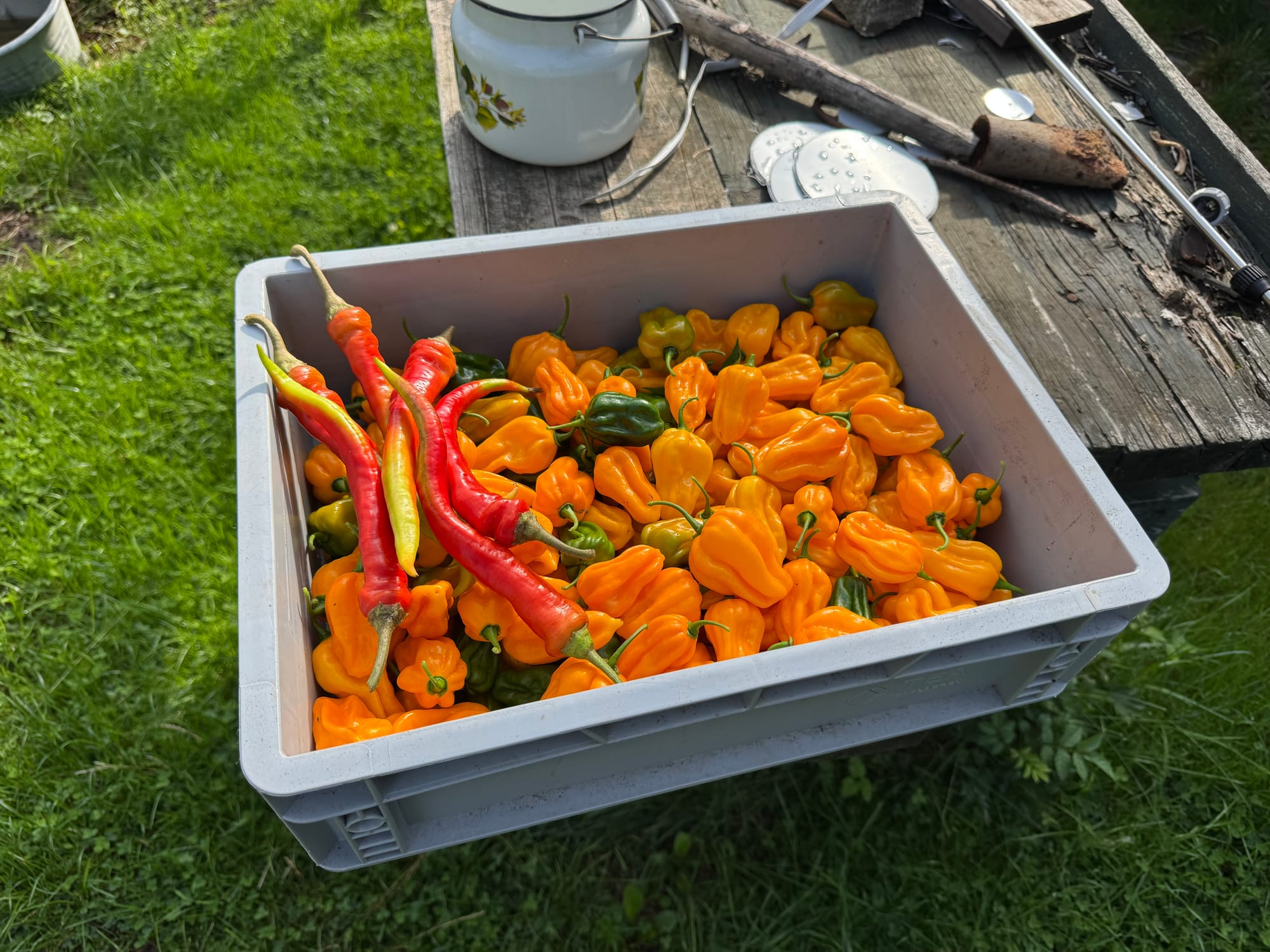
I had brought back some mangos and even fresh lemons for my hot sauces; that's one way to process them. I also opened a bag of year-old fermented peppers, and to my surprise, they were still good. Not spoiled, smelled tangy but fresh, and most importantly, they had lost a lot of their heat. They were way less spicy than the fresh ones.
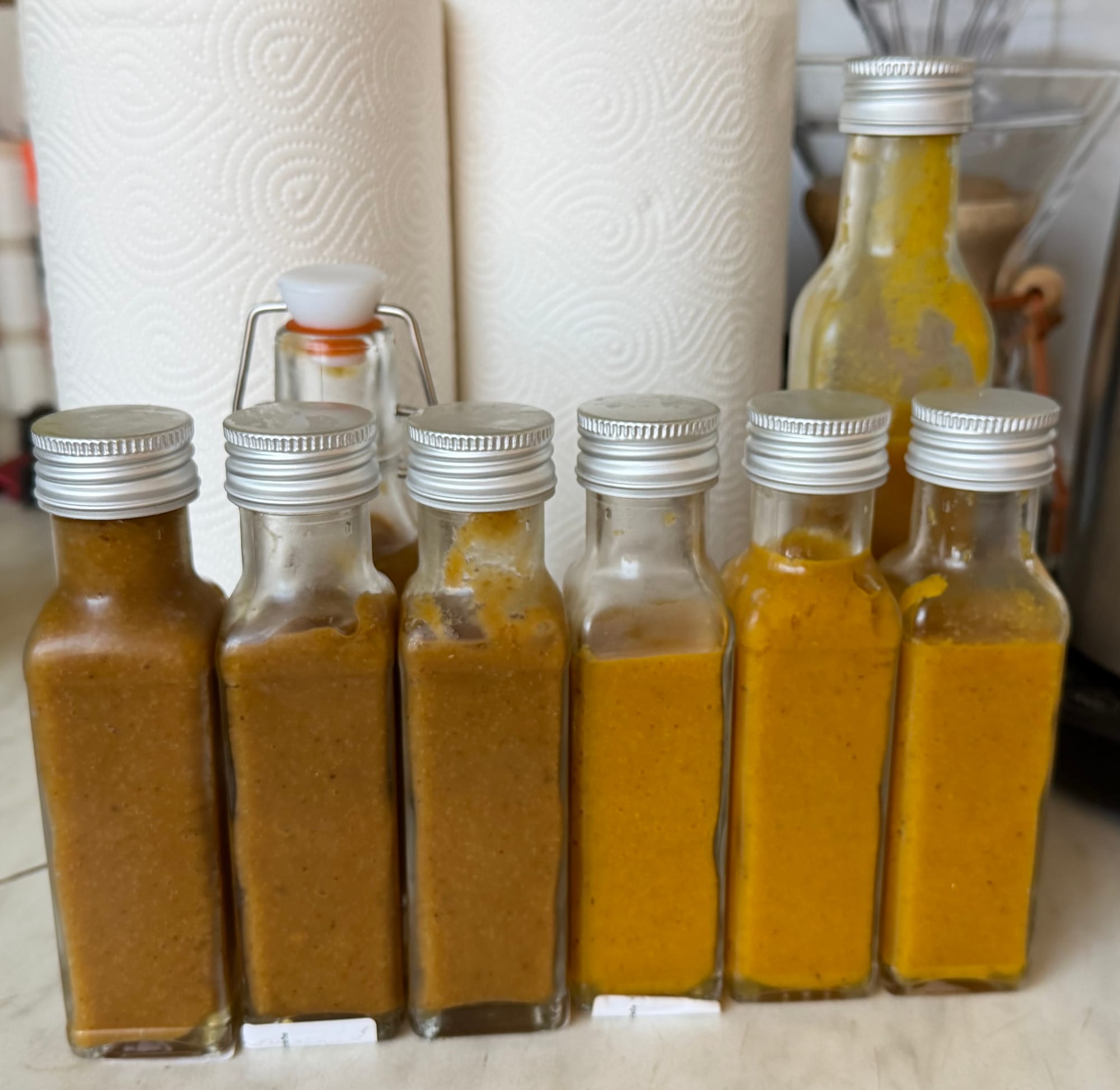
the transition to red
Shifting from yellow to red: the tomatoes had gone totally bonkers while I was away. The caretaker who supervised the garden, my mom, had a hard time maintaining the structural integrity of the plants.
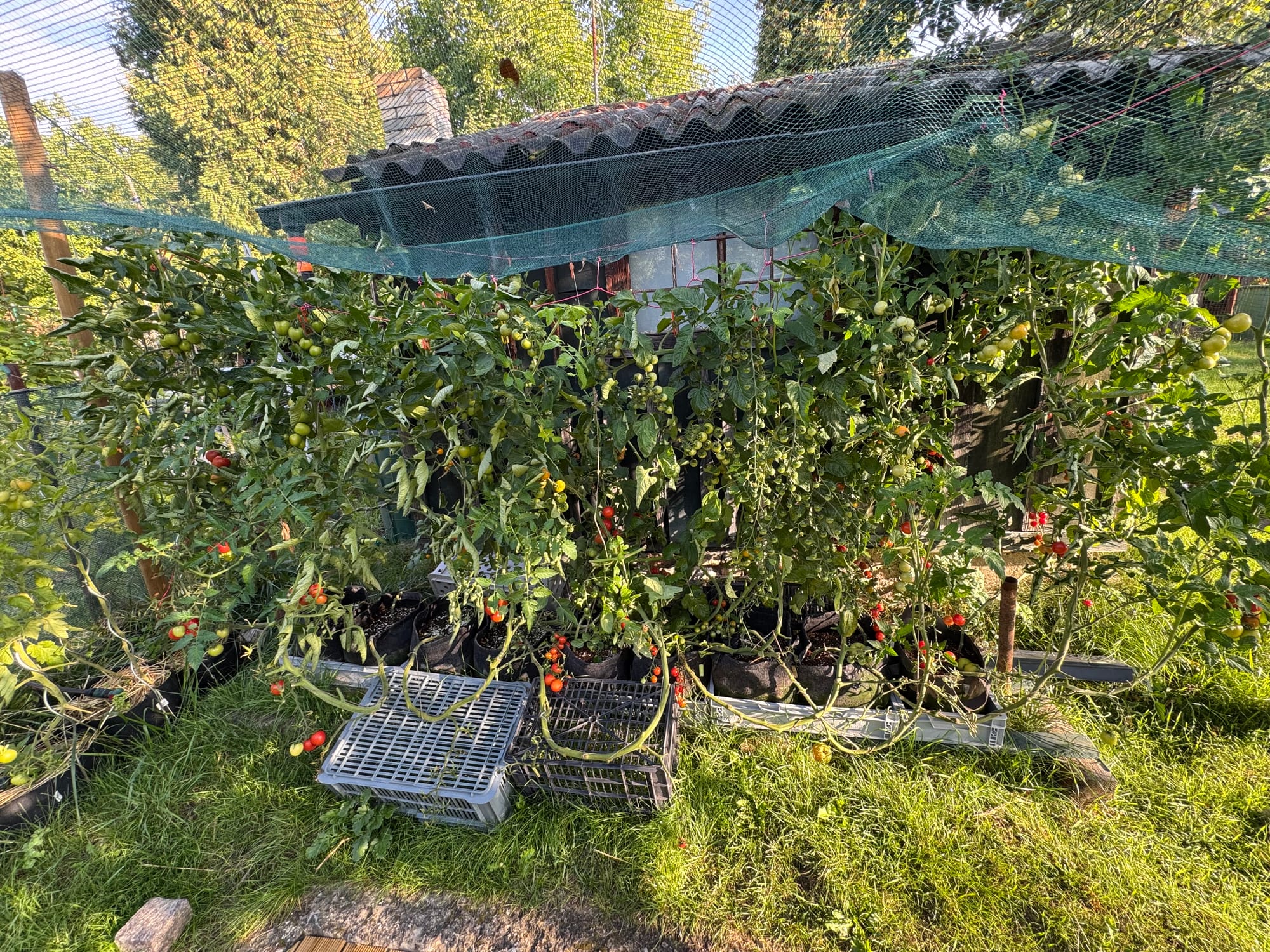
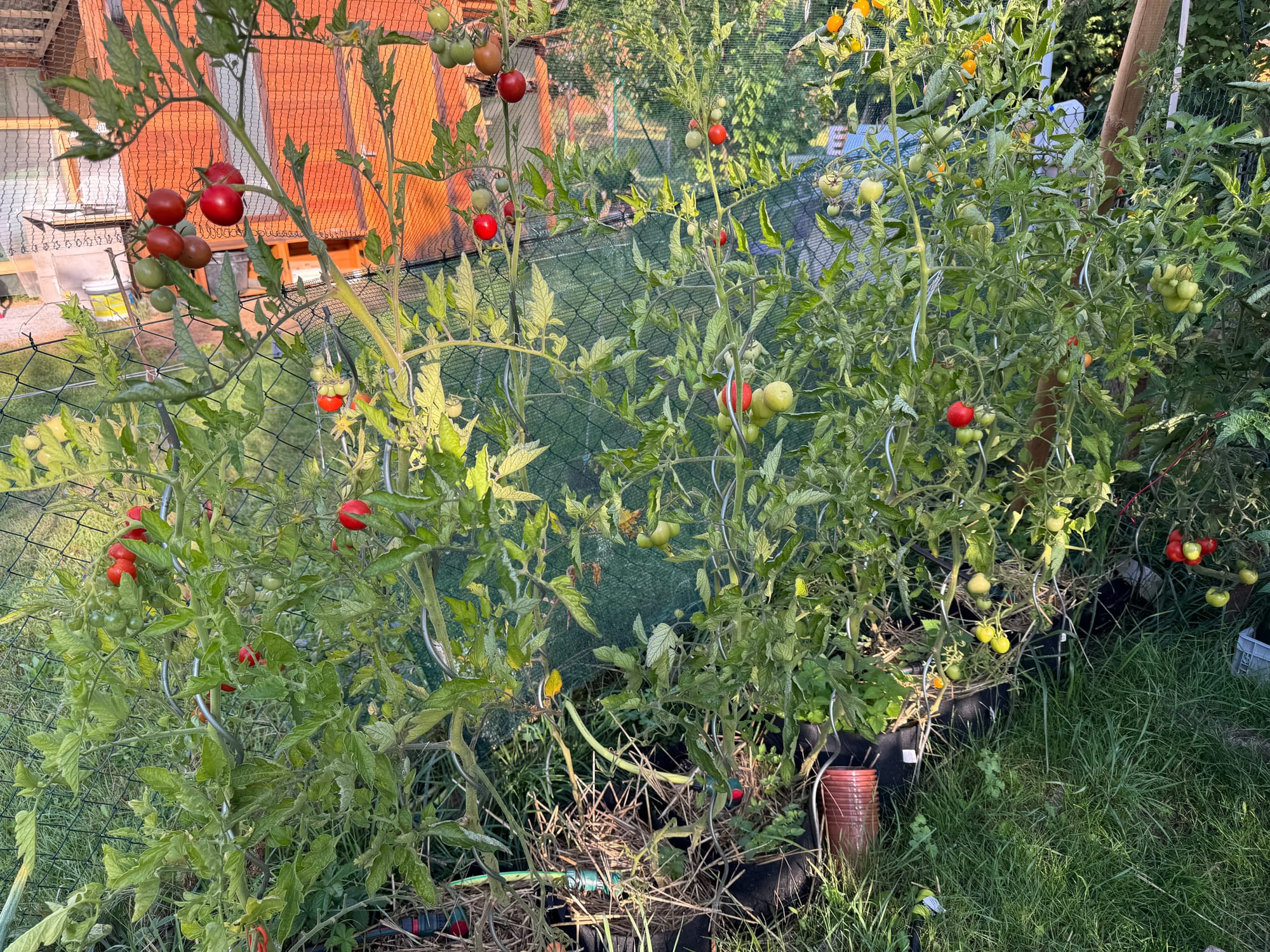
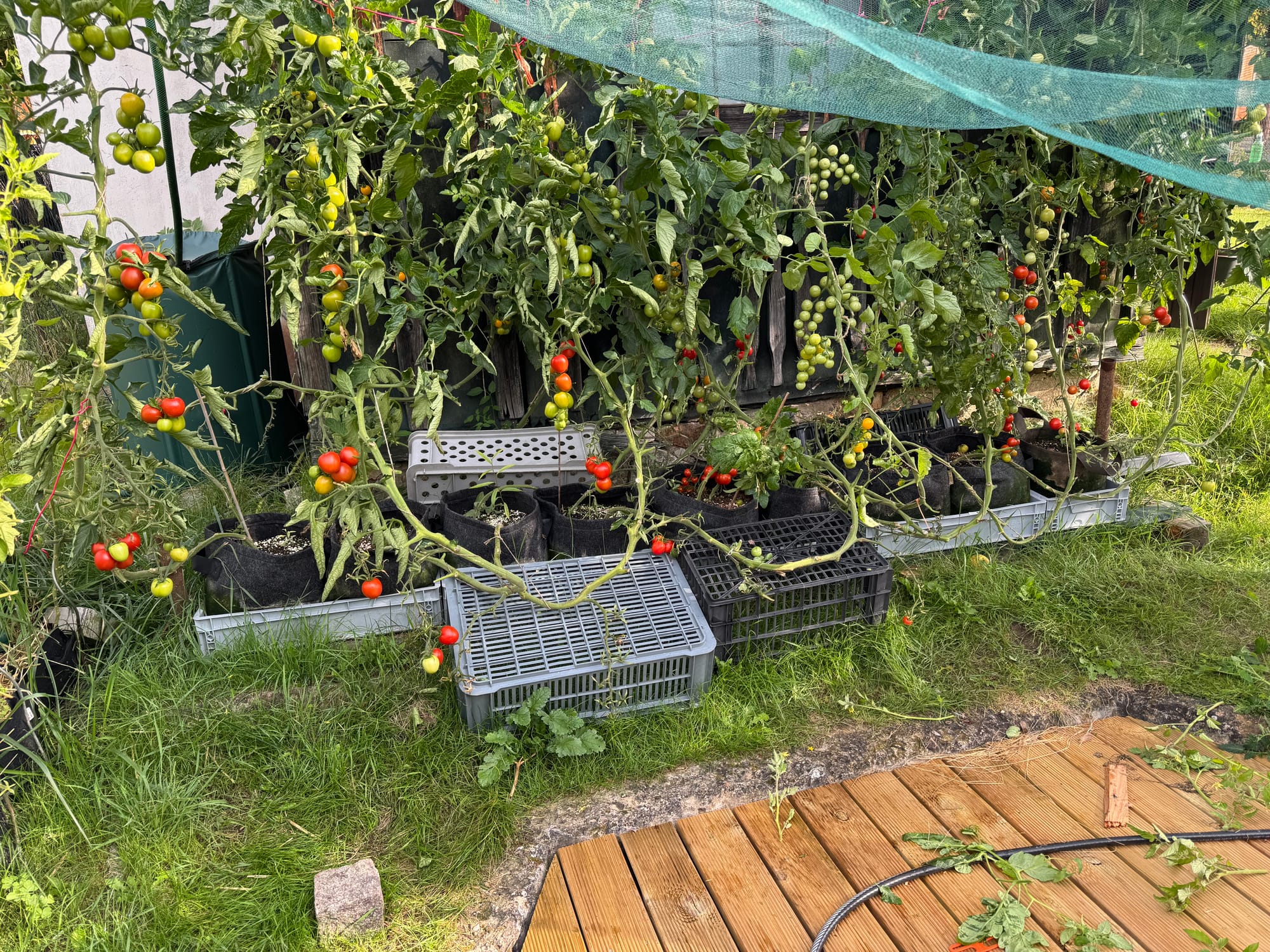
I had snipped the top terminals of all my plants before leaving. I do this every year to help the fruit mature just in time before the frost. It redirects energy from vegetation to fruit. I had also changed the nutrient mix for maximum PK. The plants loved it and went crazy with fruit size.
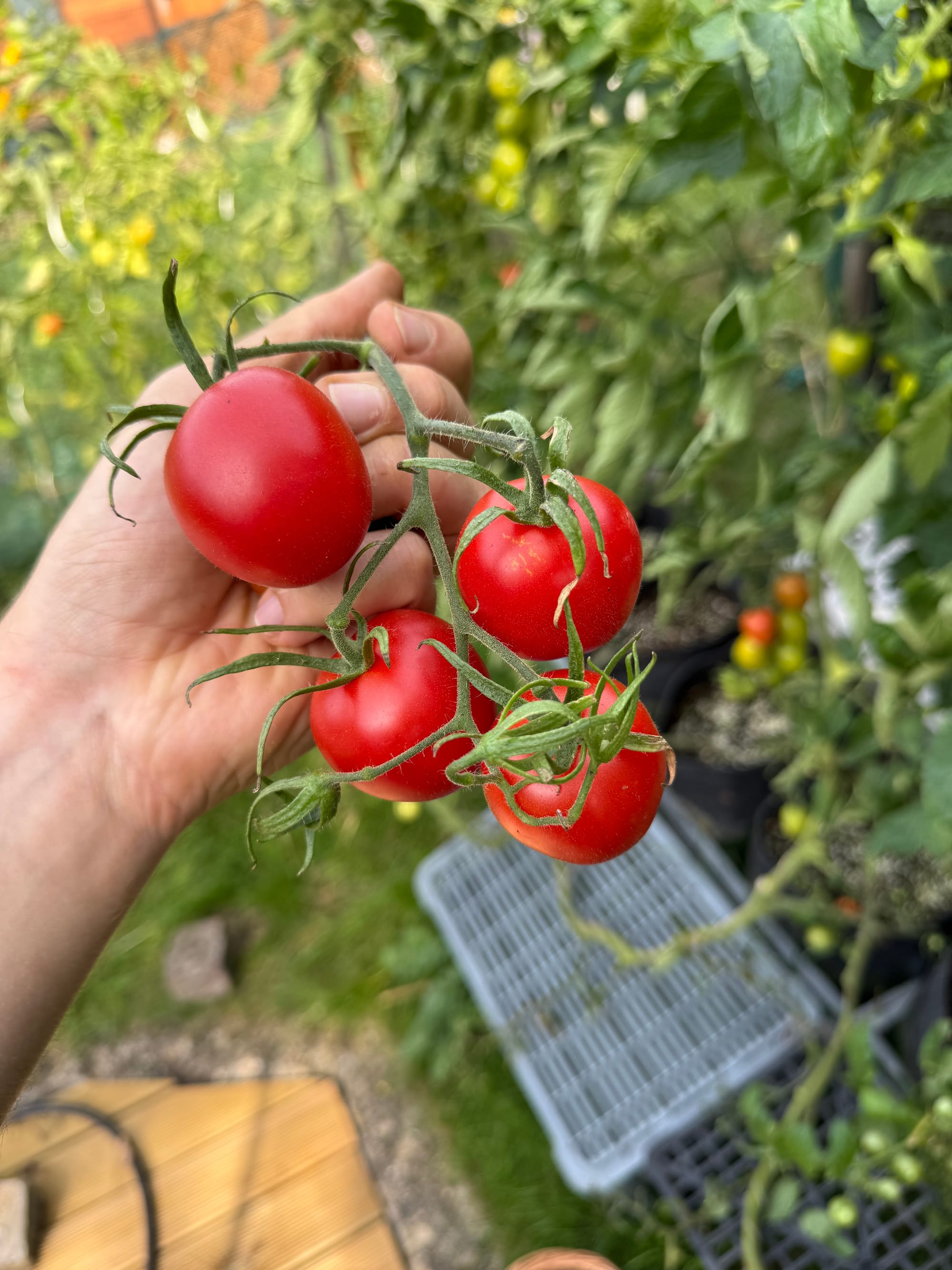
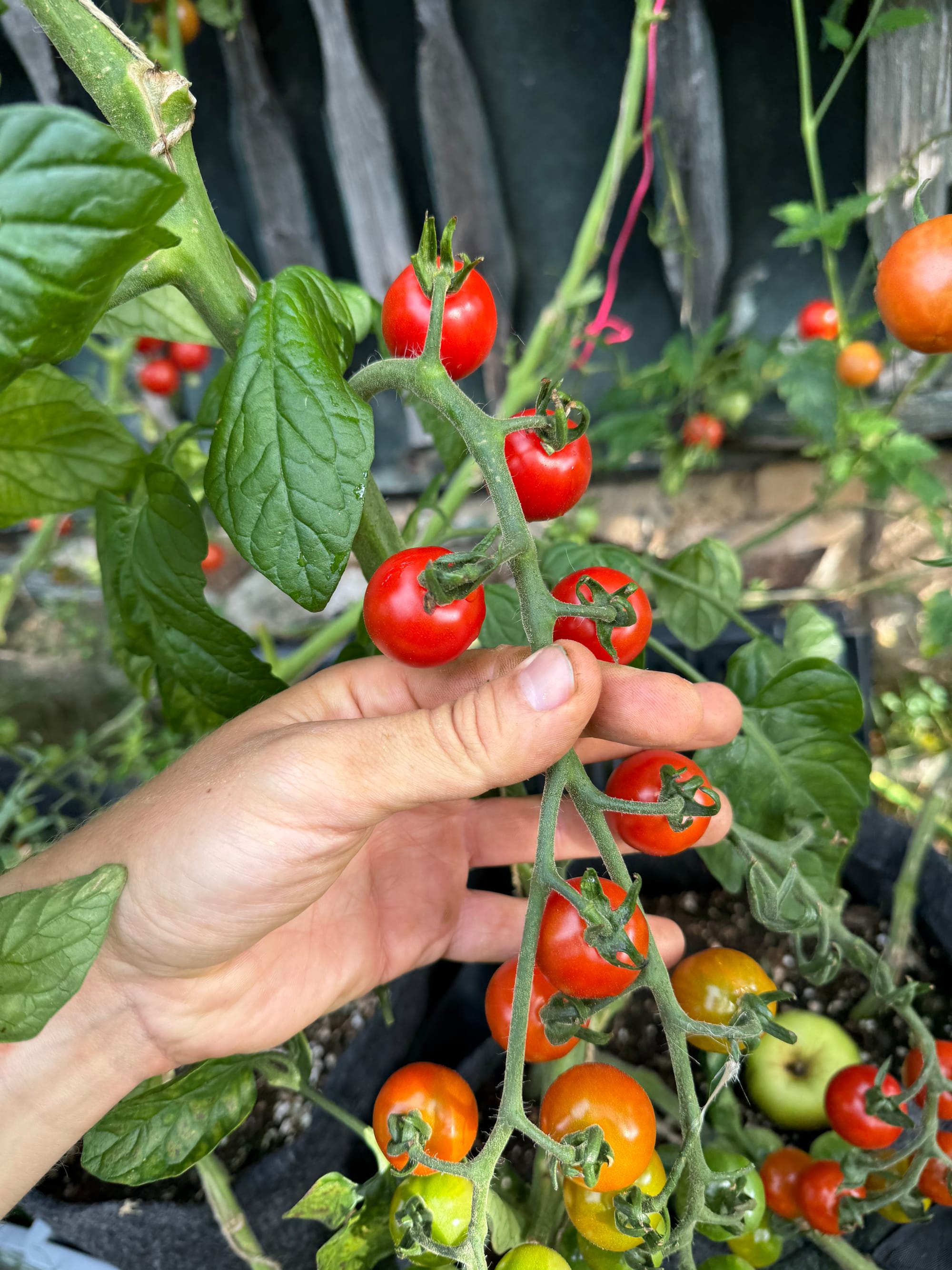
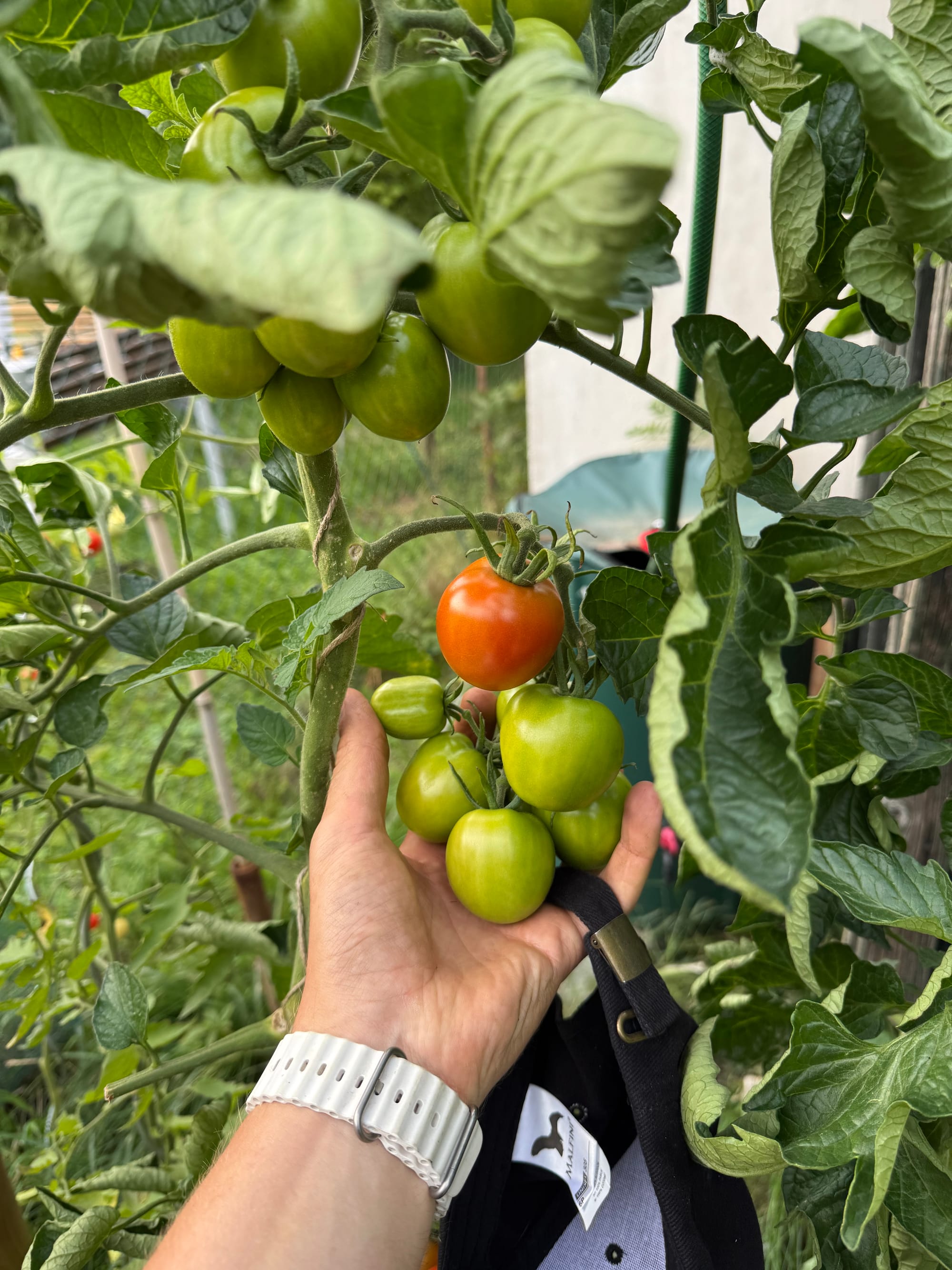
I have to beef up the new trellising structure even more next year. I am glad I built it because the old one wouldn't have held up.
The cold arrived a little early this year, and by mid-month, the tomatoes were almost dormant. A forecast predicted some lows, and I wanted to maximize the harvest, so I stripped virtually every leaf, leaving just one or two per plant to redirect all energy into ripening fruit.
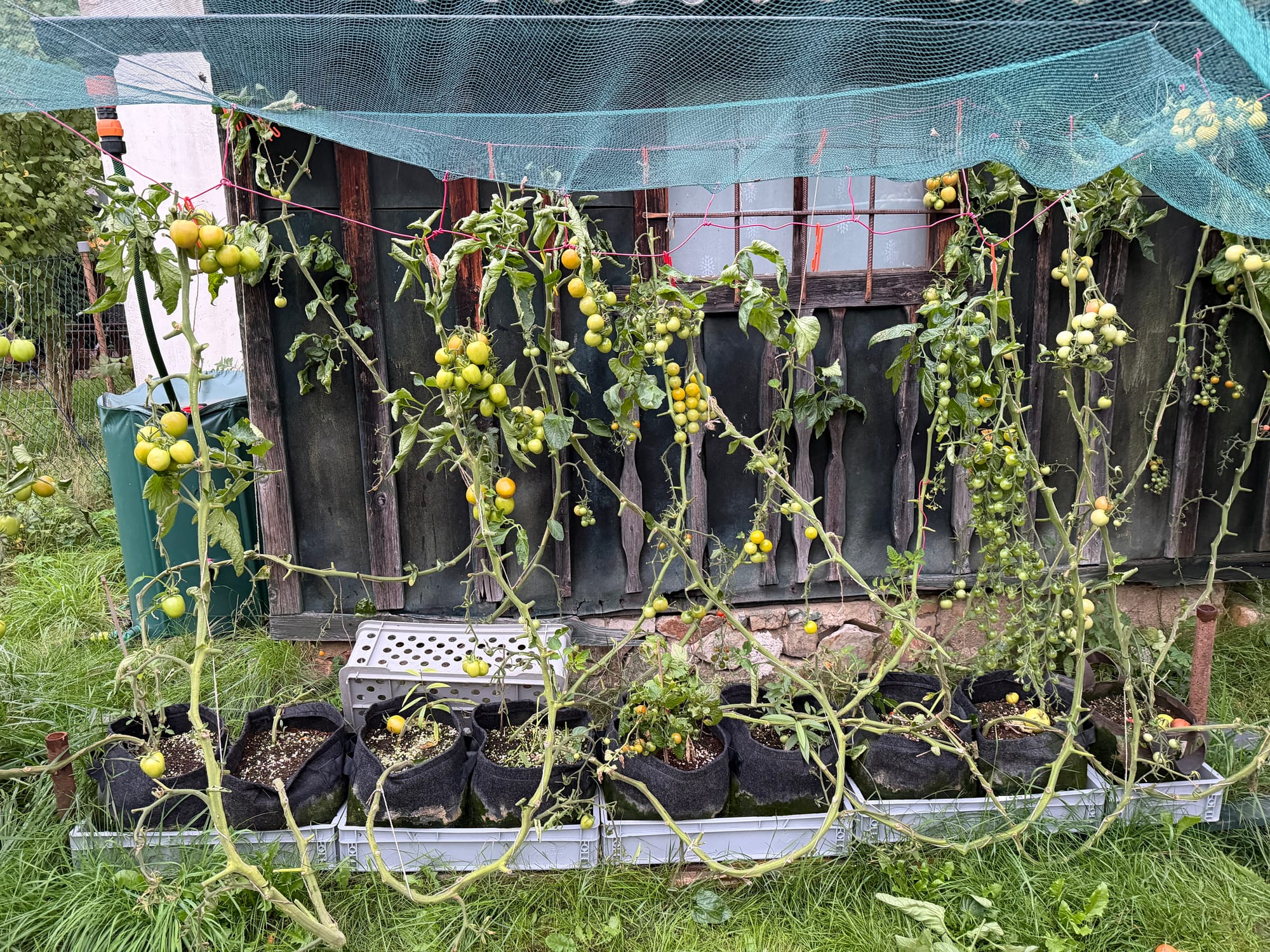
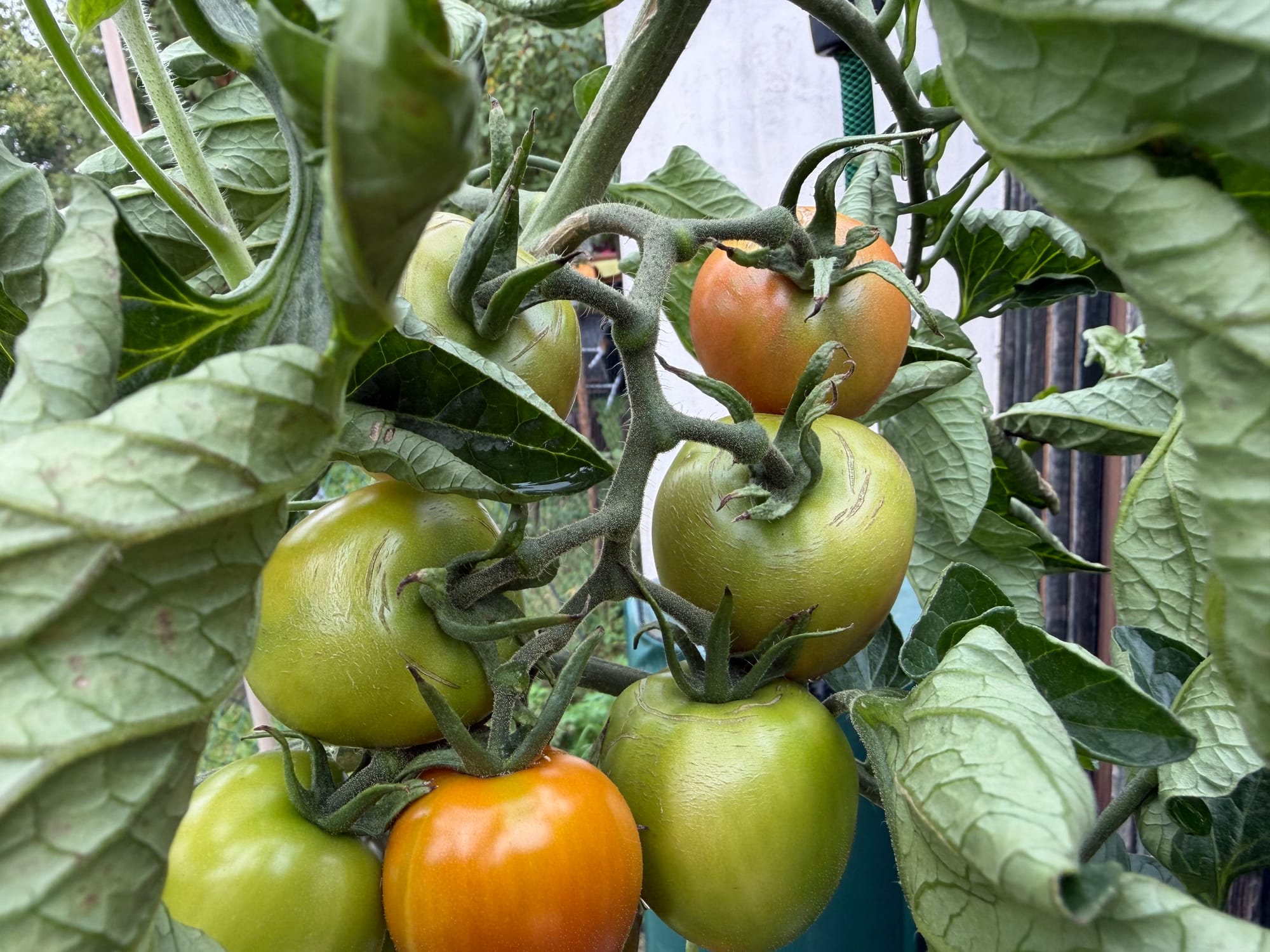
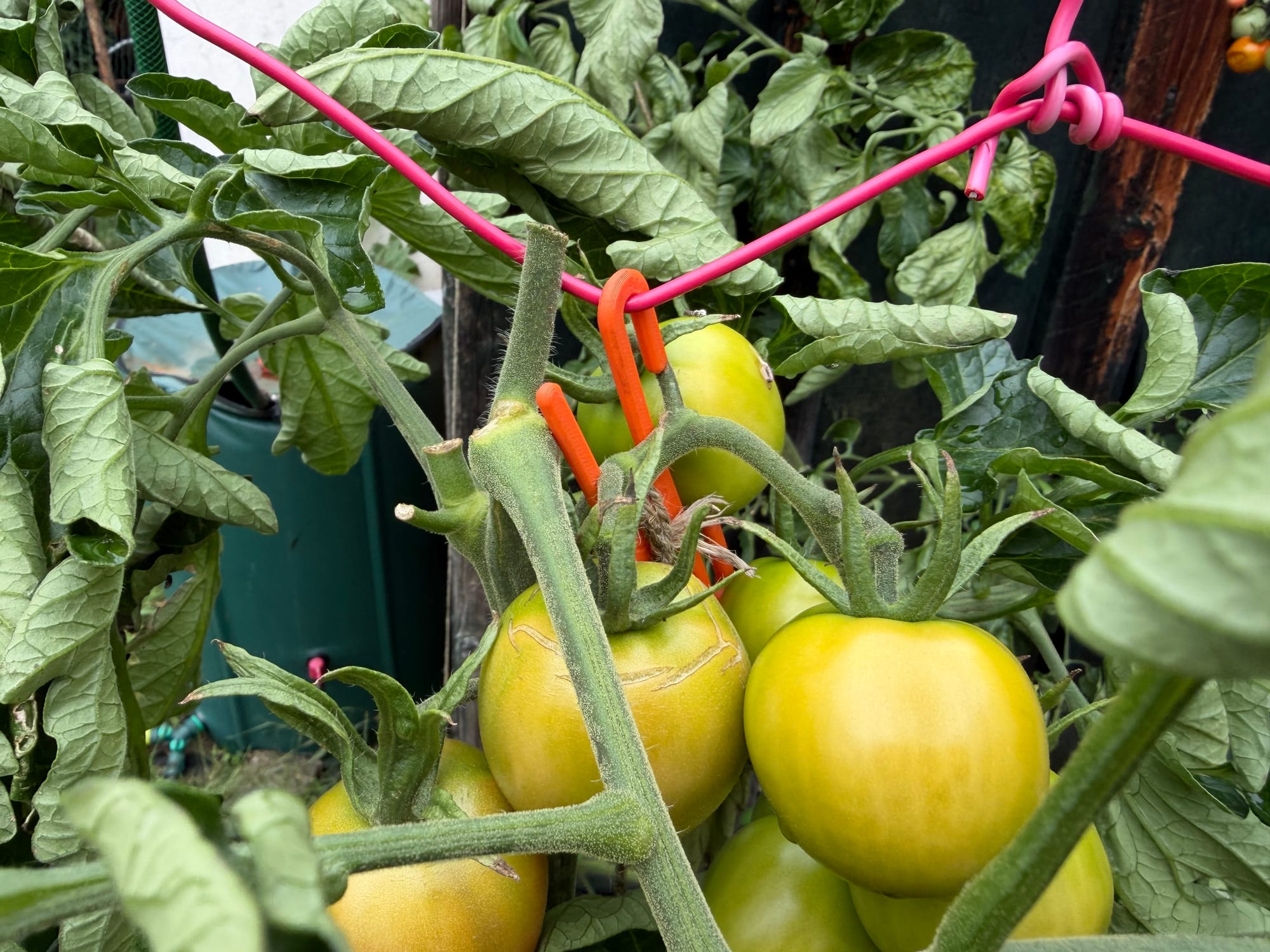
the lasting legacy
Let's knock out the rest before I get to the spicy topic. It is apple season! And I have apples, in crates.
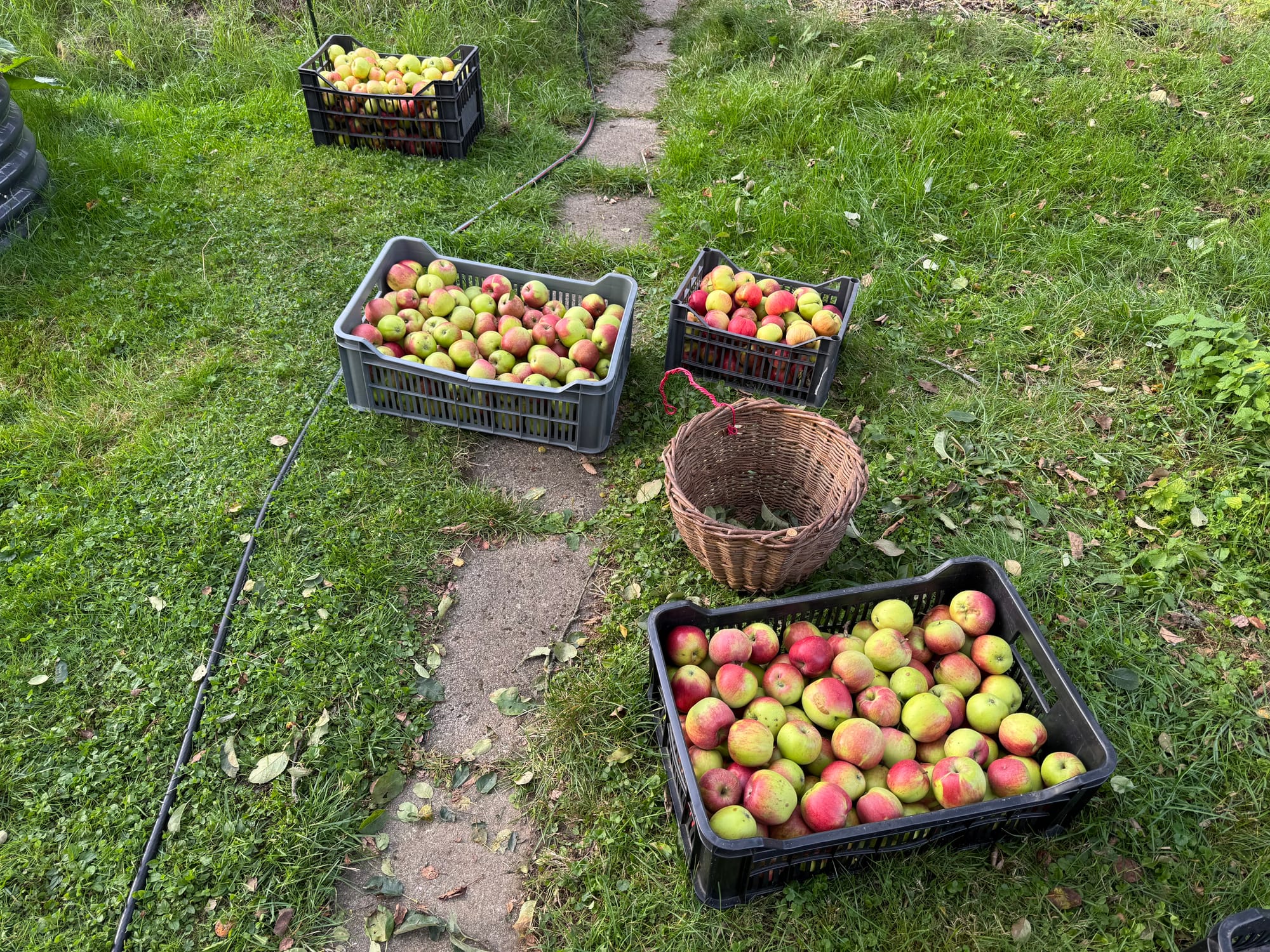
The dry and hot June, followed by a wet and cold July, really did a number on my apples. They turned out big and plentiful, but I don't know how this will play out long-term. I've already lost three branches this year, and I am afraid the trees won't last much longer. They are really old, basically in their 40s, and I have no experience maintaining or pruning trees that old.
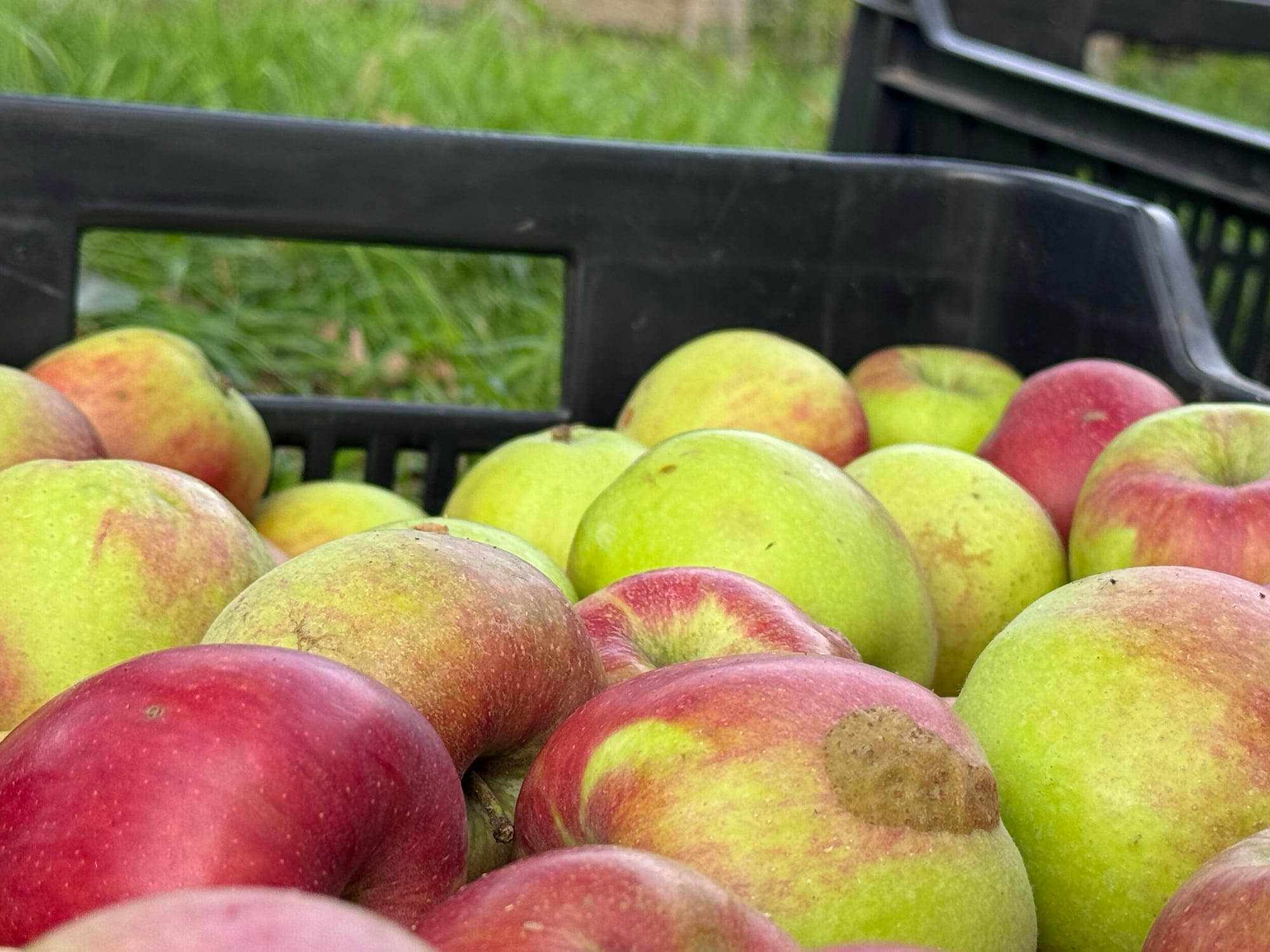
My favorite tree has a carved and rotted trunk. It had taken some damage ~15 years ago, and I should start thinking about whether, and how, to replace it. I'd like to replace it with something smaller; harvesting a big tree is a pain in the ass, and half the fruit goes to waste. It also casts a shadow over a spot where I could grow something else. I could replace the tree with a greenhouse.
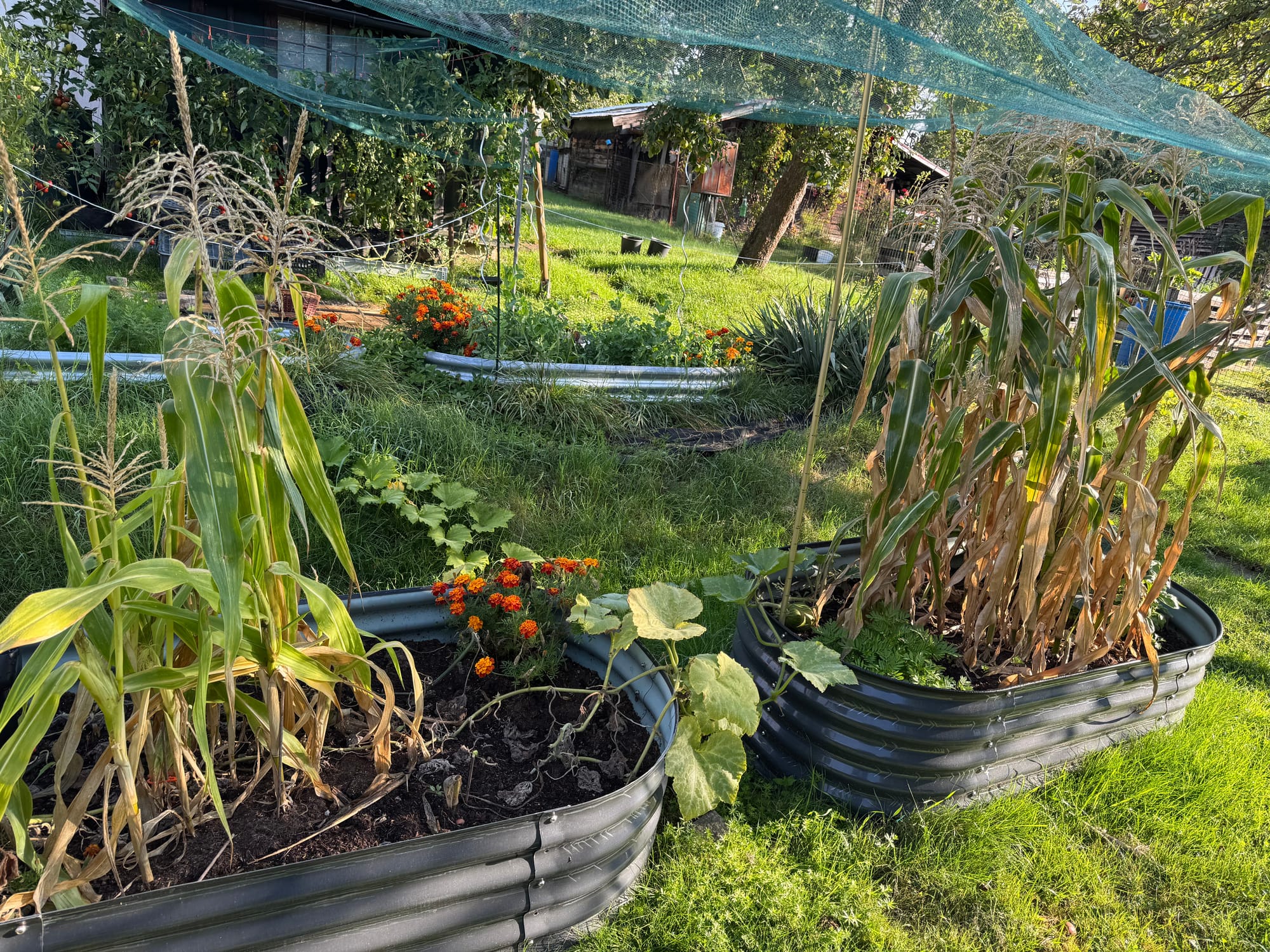
The corn survived, but the cobs were dead. I don't know if I did something wrong. I hoped the remaining cobs would mature, but they either rotted or stayed small. The soil may be too poor because I mixed it. I have some ideas for next season, for example, corn really hates transplanting because it disrupts the root system. But I could use de-composable paper pots that disintegrate. That should give me up to a month's head start. But that's future talk. In the present, I have just cut and chopped everything. Including the squash, there was no point in keeping it alive.
What's not dead yet is the lettuce and fennel I transplanted in August. While the lettuce was basically ready to eat, the fennel was taking its time. But I like the way it looks.
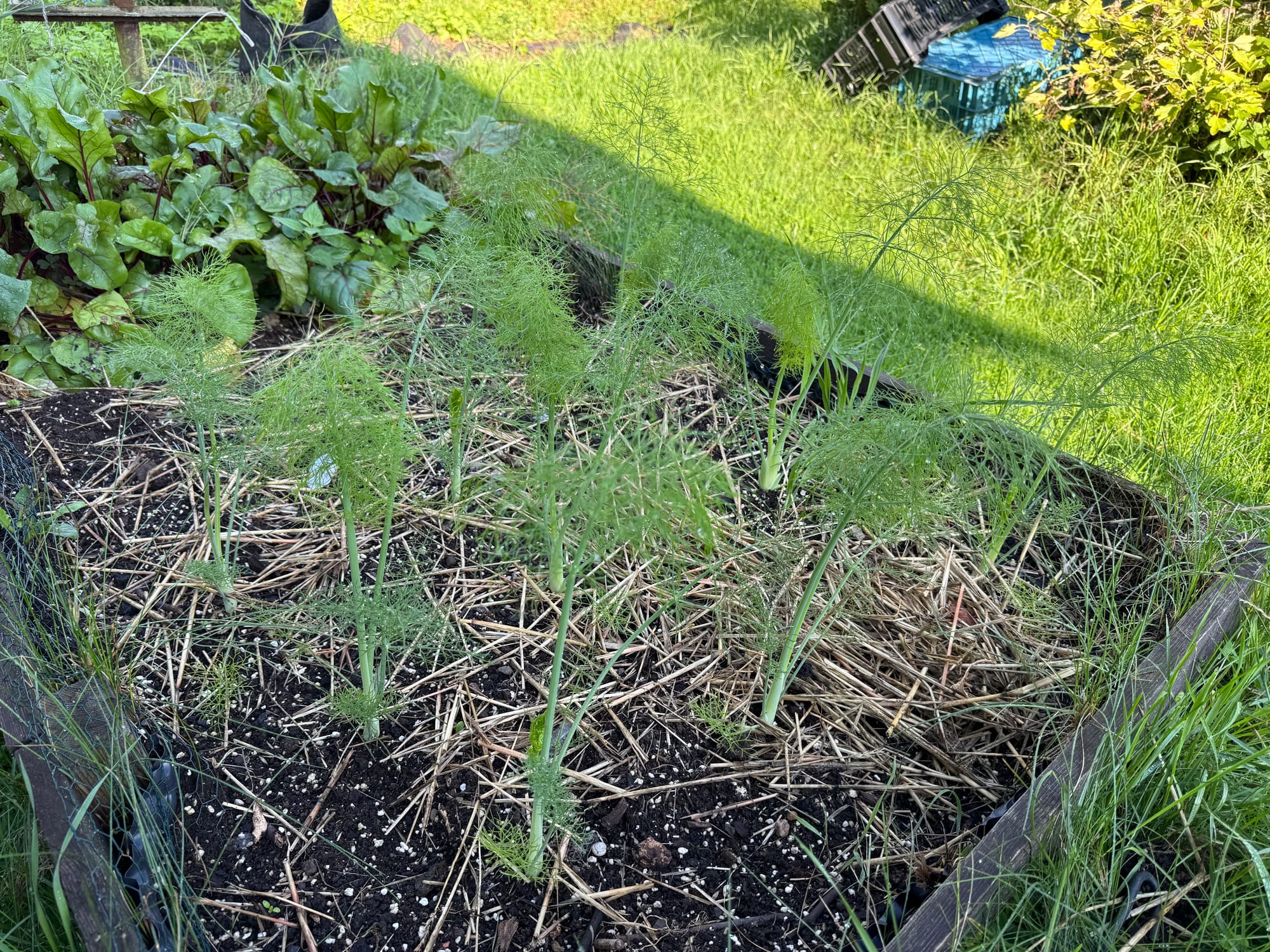
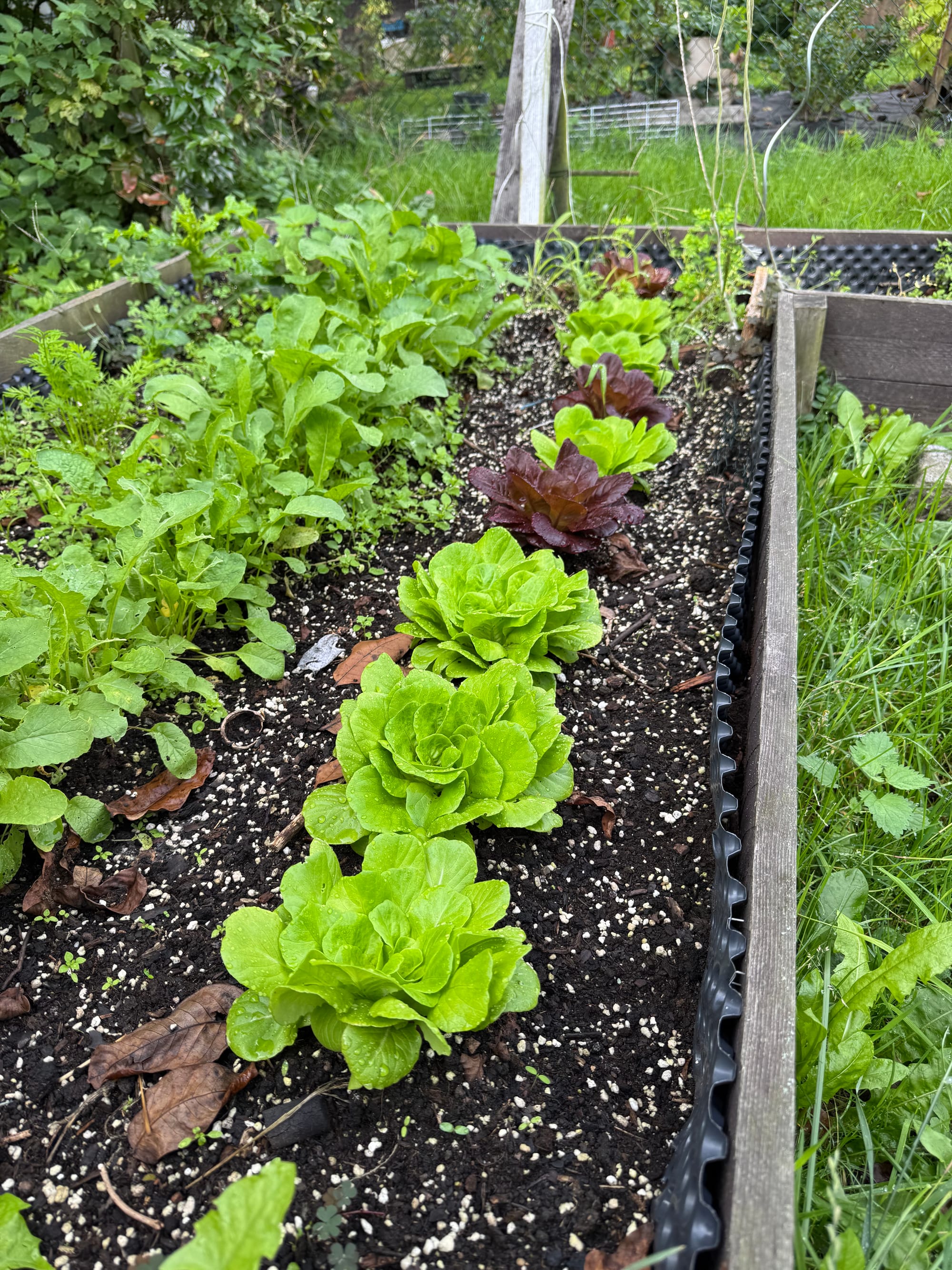
I had some empty soil bags, and there should be enough time for one more round of lettuce in the greenhouse.
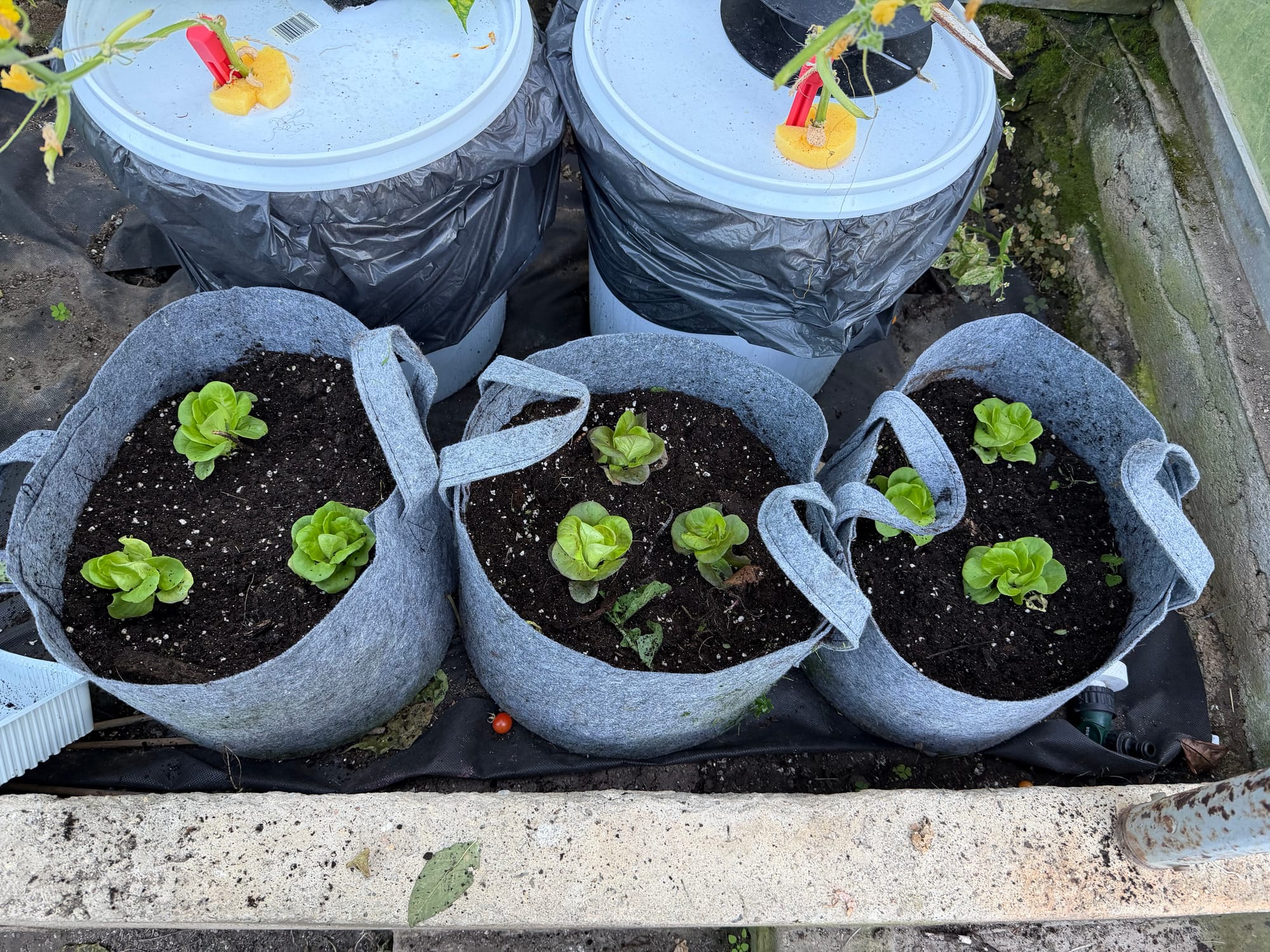
In the remaining beds, I still have some peas, but they're not very tasty, though. The pods are bitter, and the plants show signs of powdery mildew. It is a cover crop now. But with decorations!
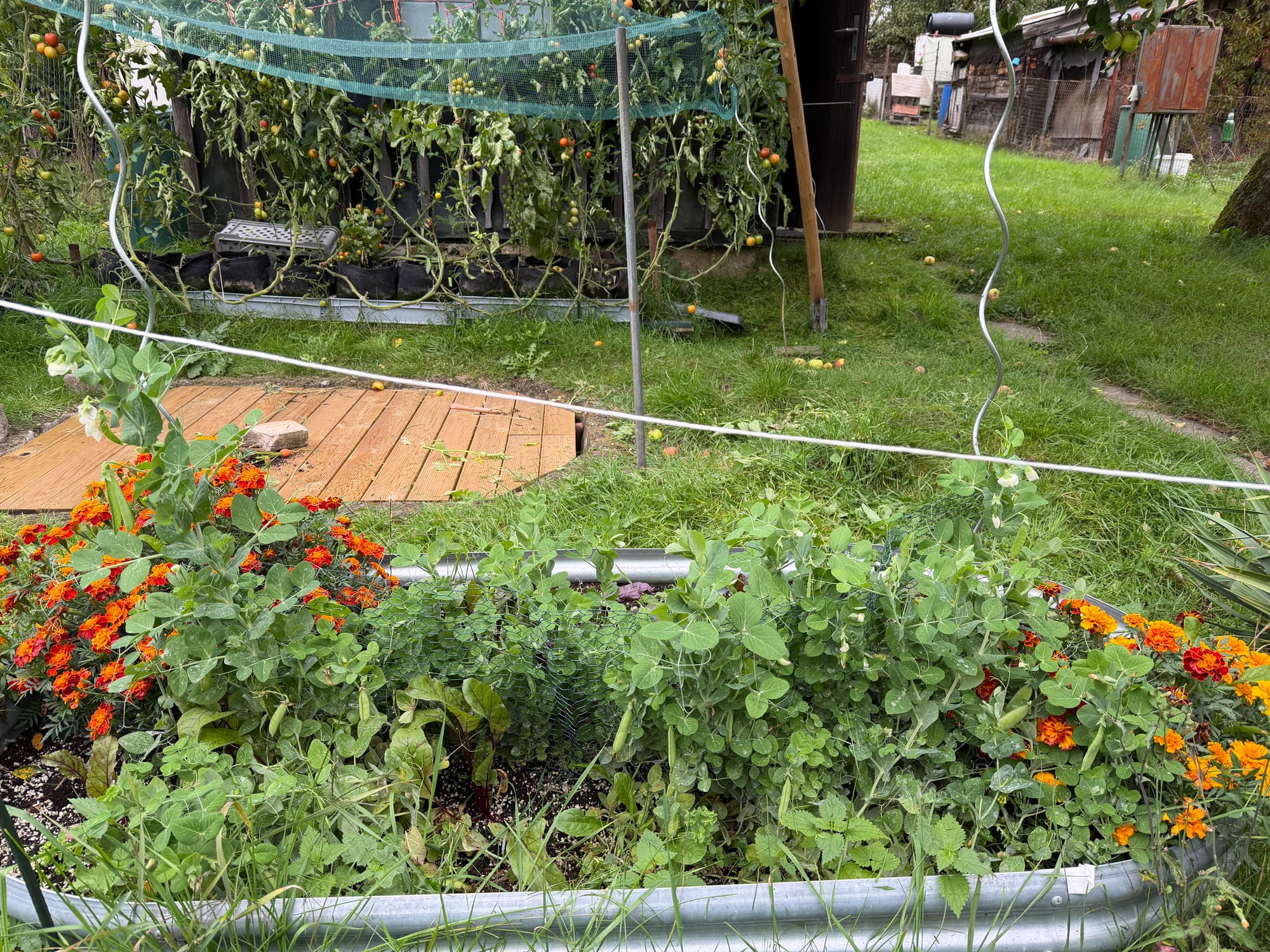
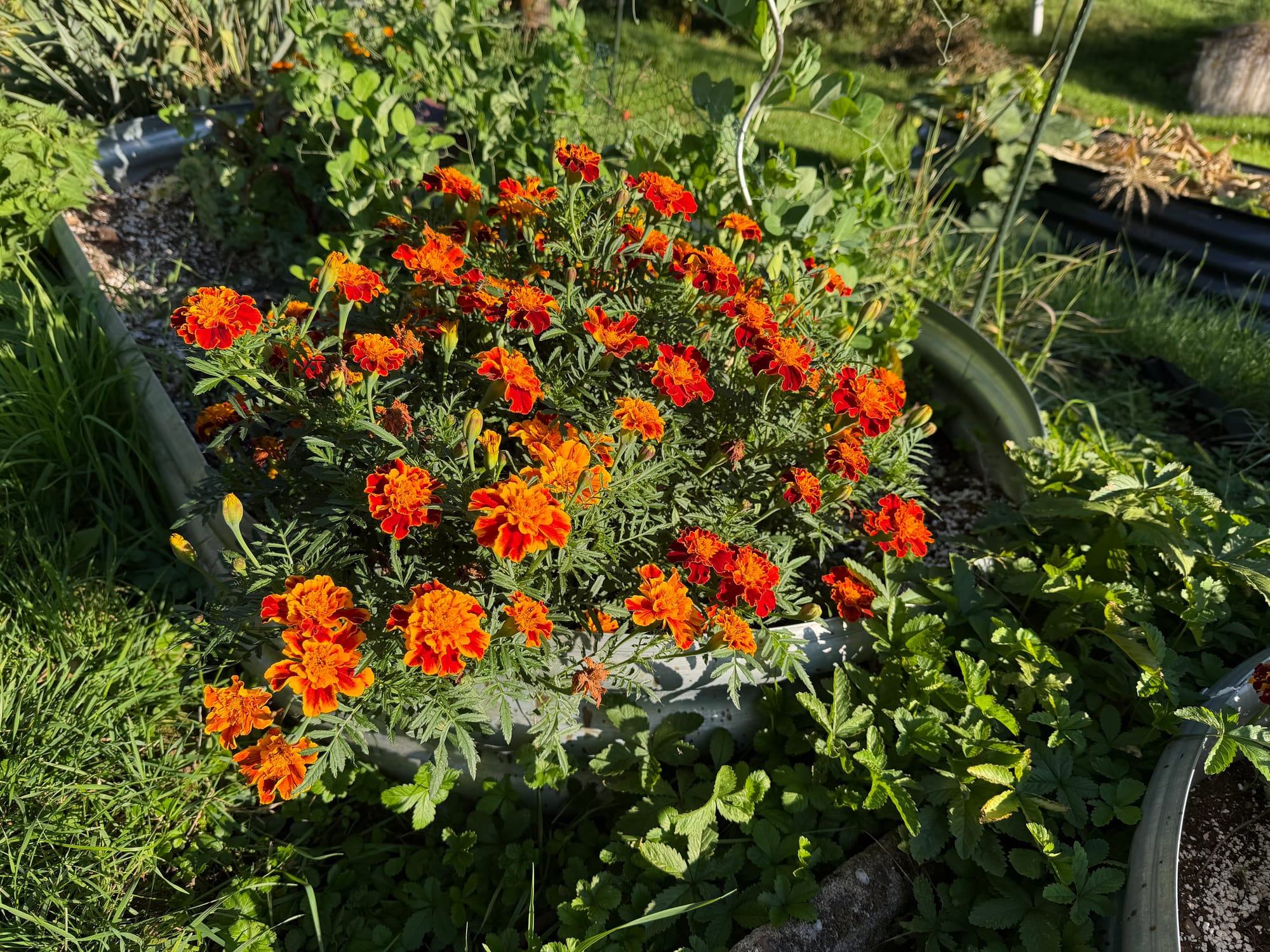
What could have been just decorative, but ends up as food, is the sunflower bed with basil. It had already started flowering, just in time for harvest. I chopped it all down; there was no time for pruning or continuous harvesting. In hindsight, I could've made some cuttings for the winter season. Oh well, too late now.
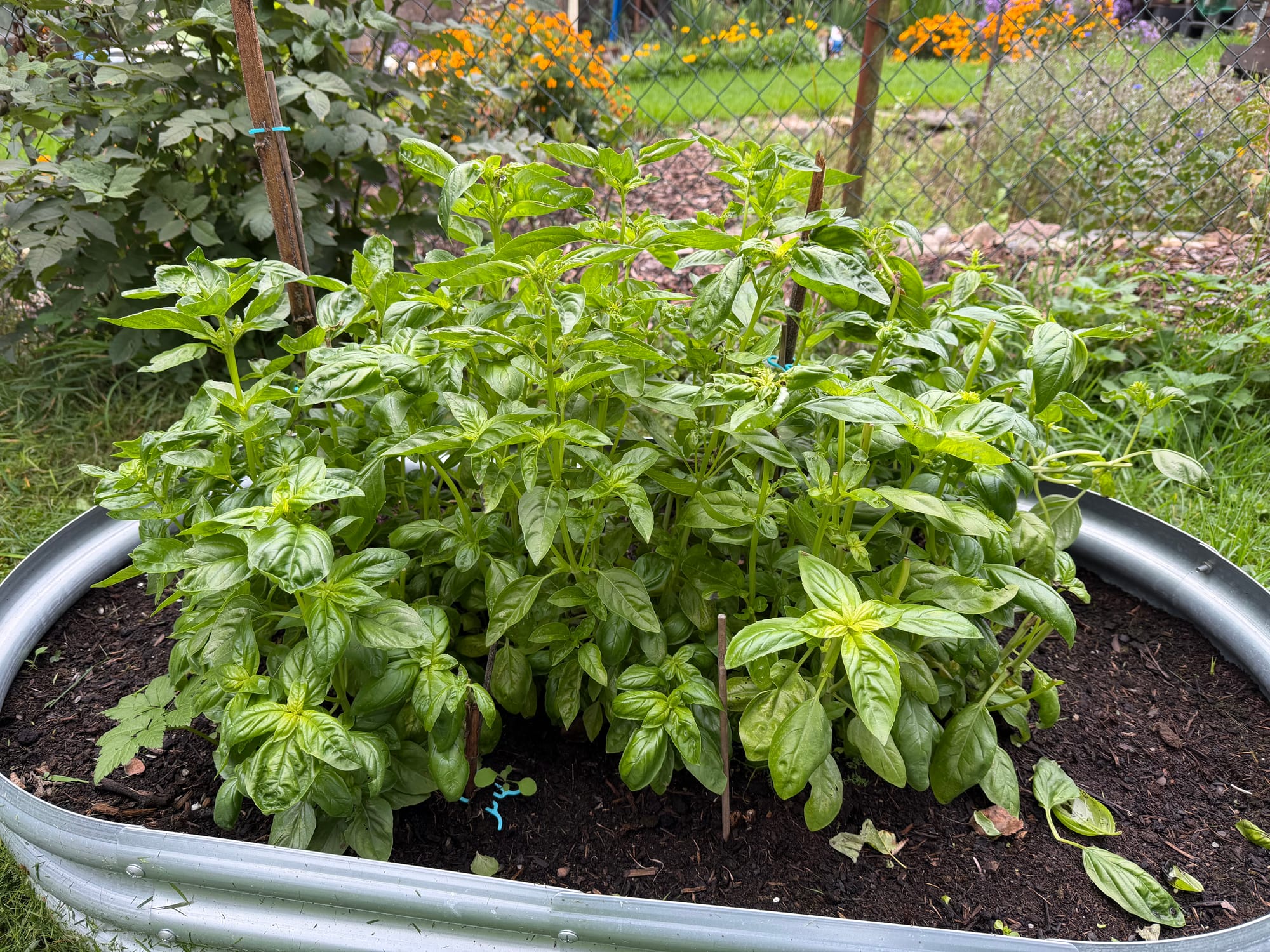
the expectations
And now for the main show: the cucur-bits. Get it?
Quick refresher, I had messed up the soil and placement of my slicing cucumbers. Only a few survived and produced. I sowed a fresh batch back in July and tried an ambitious hydroponic speedrun.
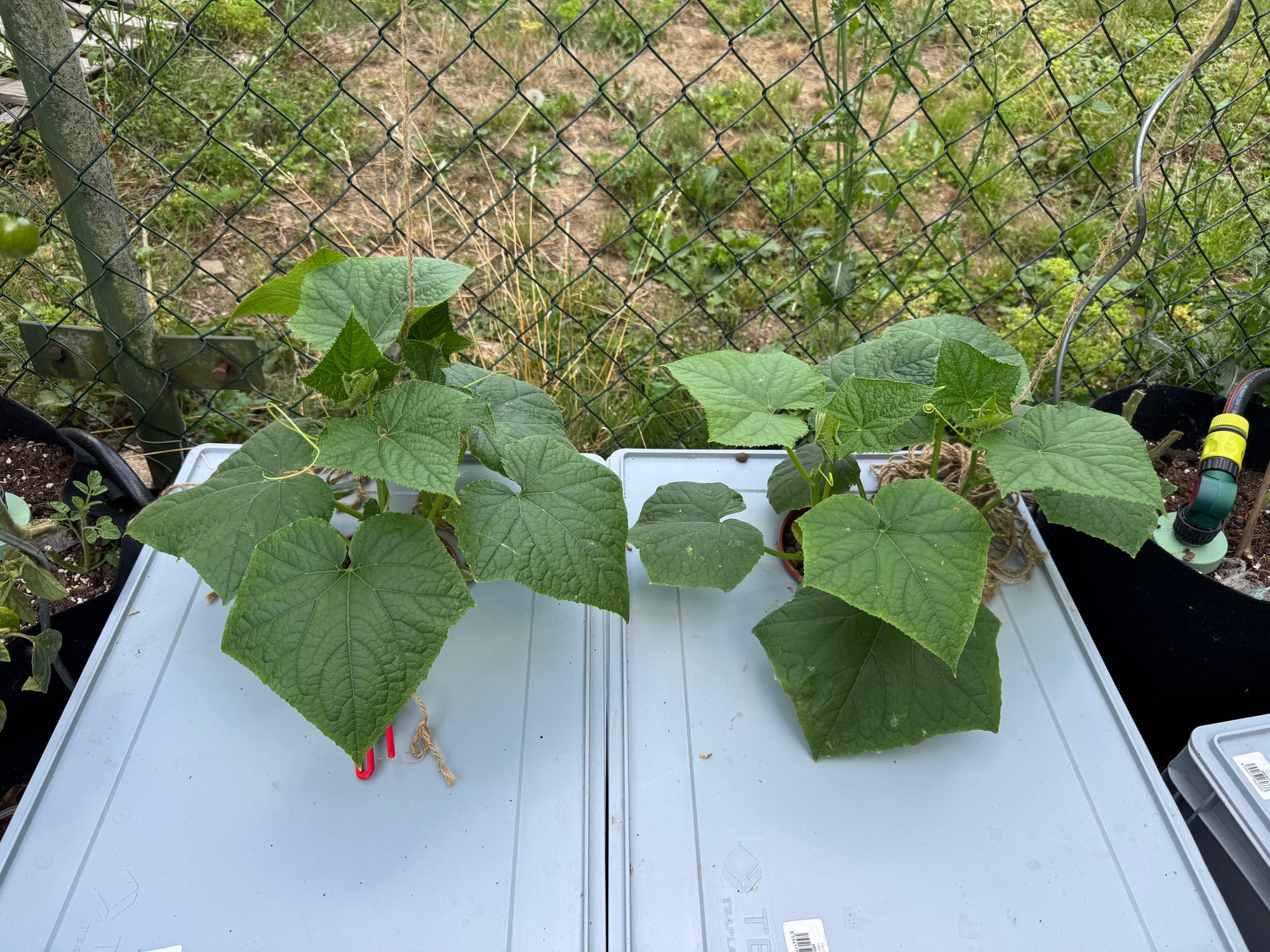
I also sowed some zucchini: two plants in Kratky hydroponics and about 12 plants in regular soil. That was the situation in August. During the two weeks I was gone, two things happened: they went wild with fruit, and powdery mildew went wild on the leaves.
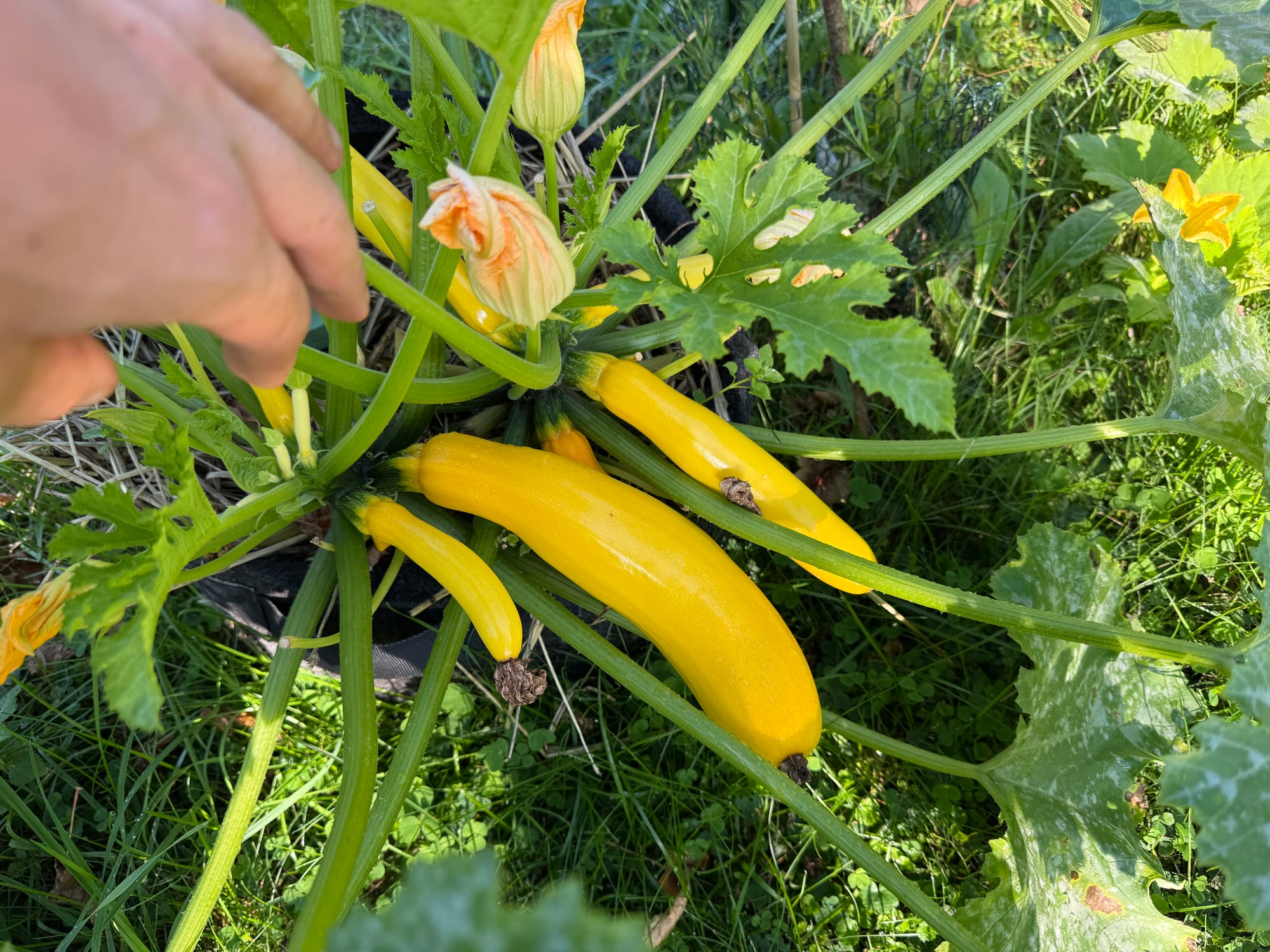
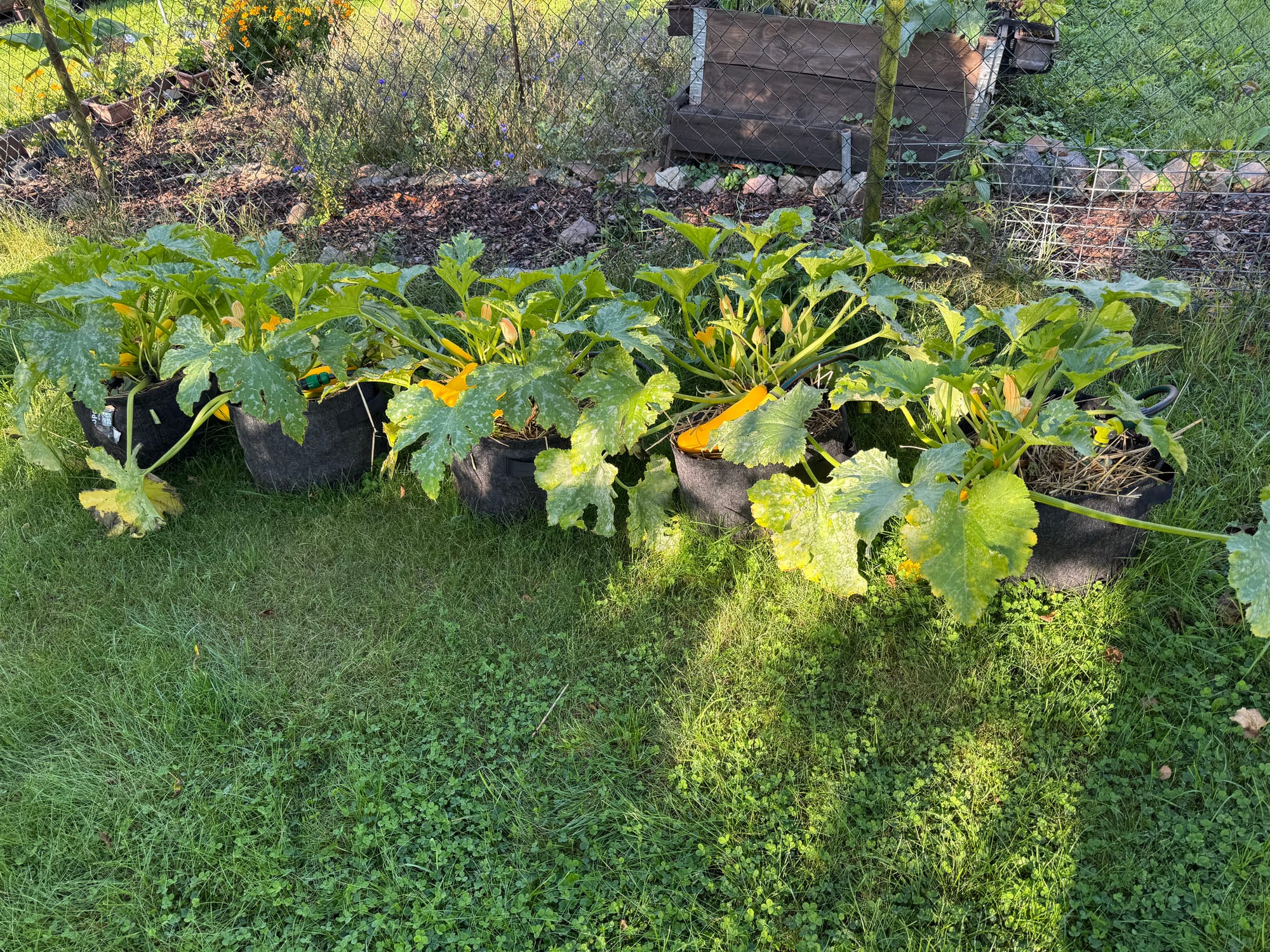
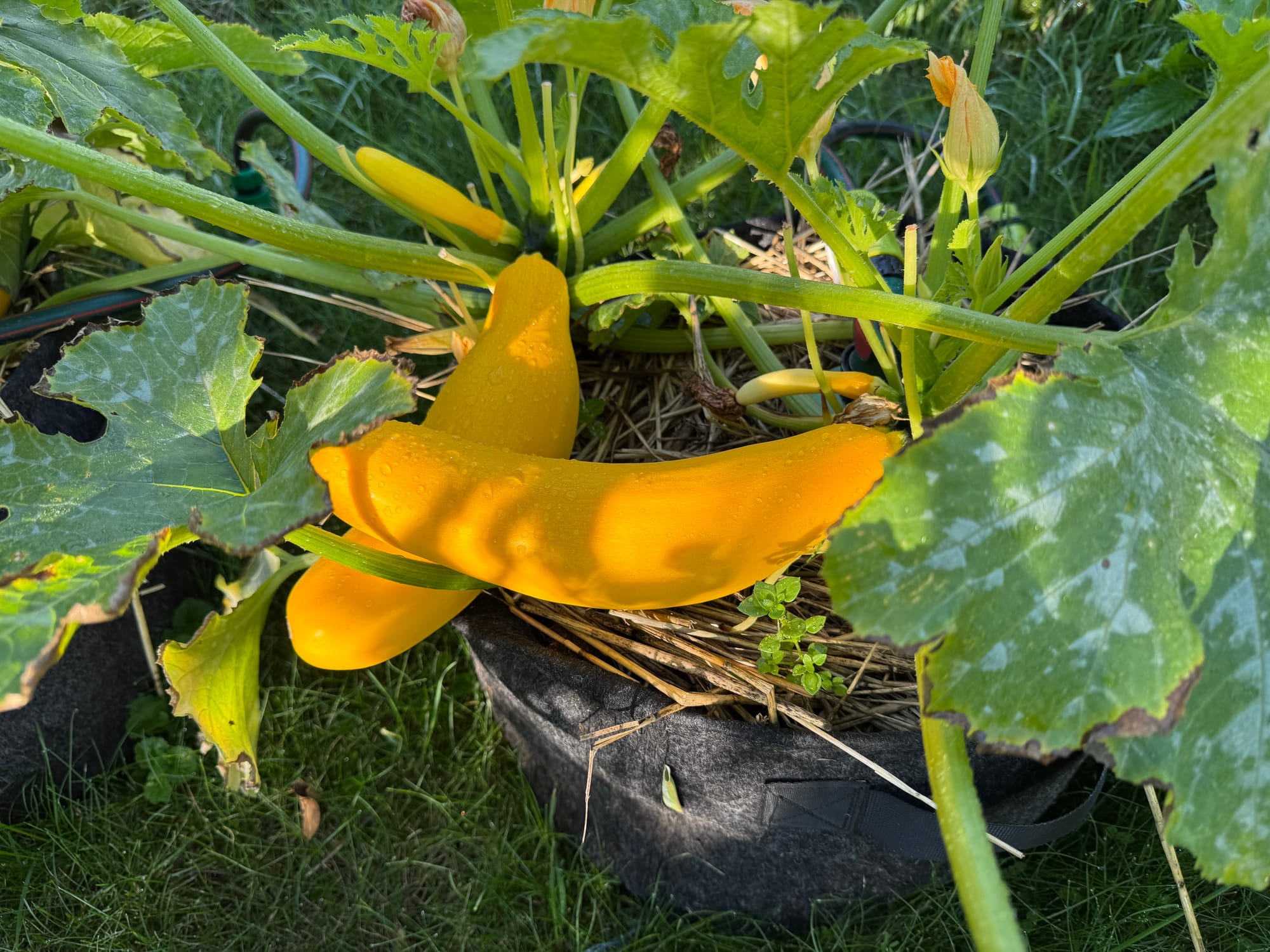
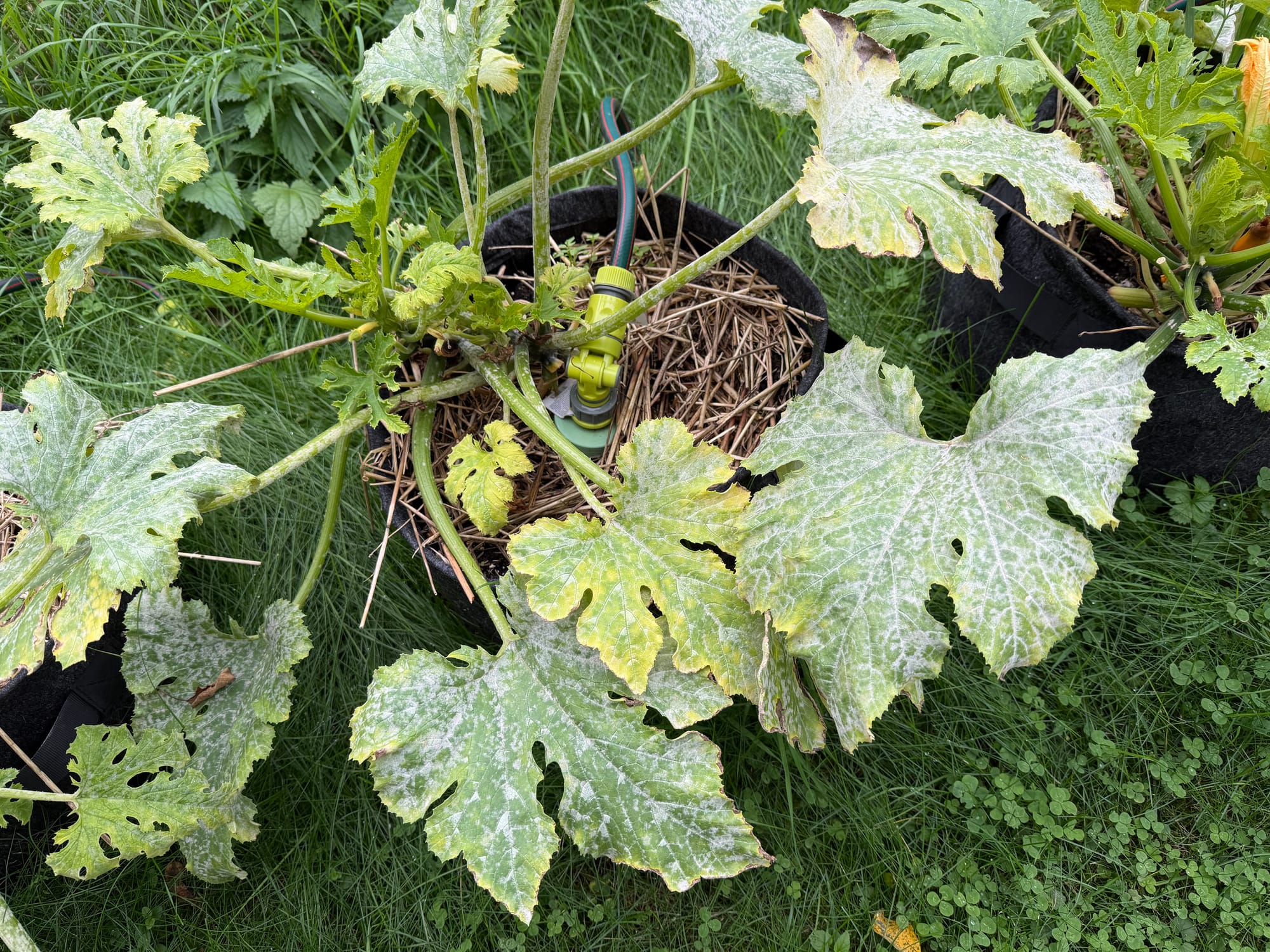
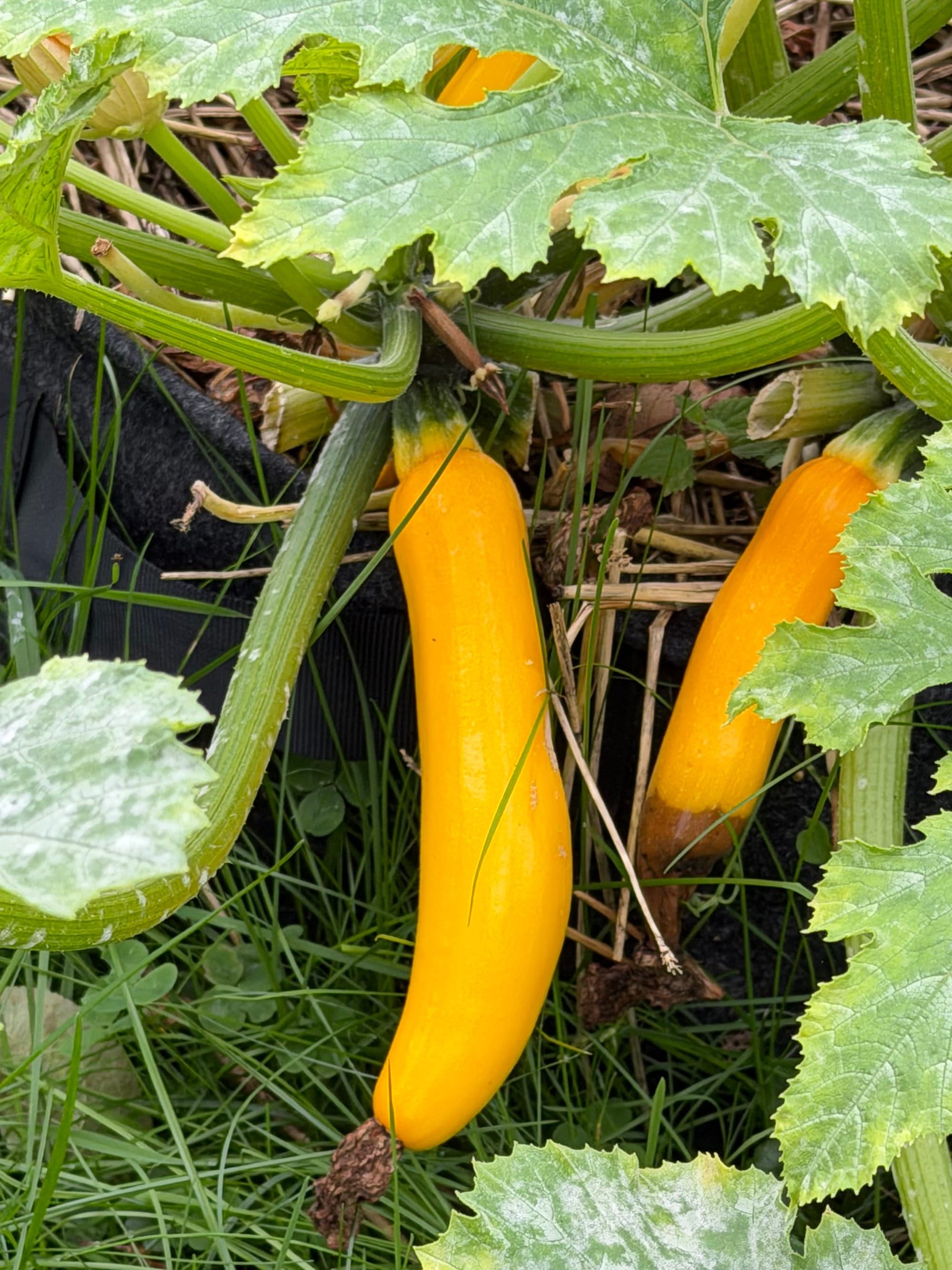
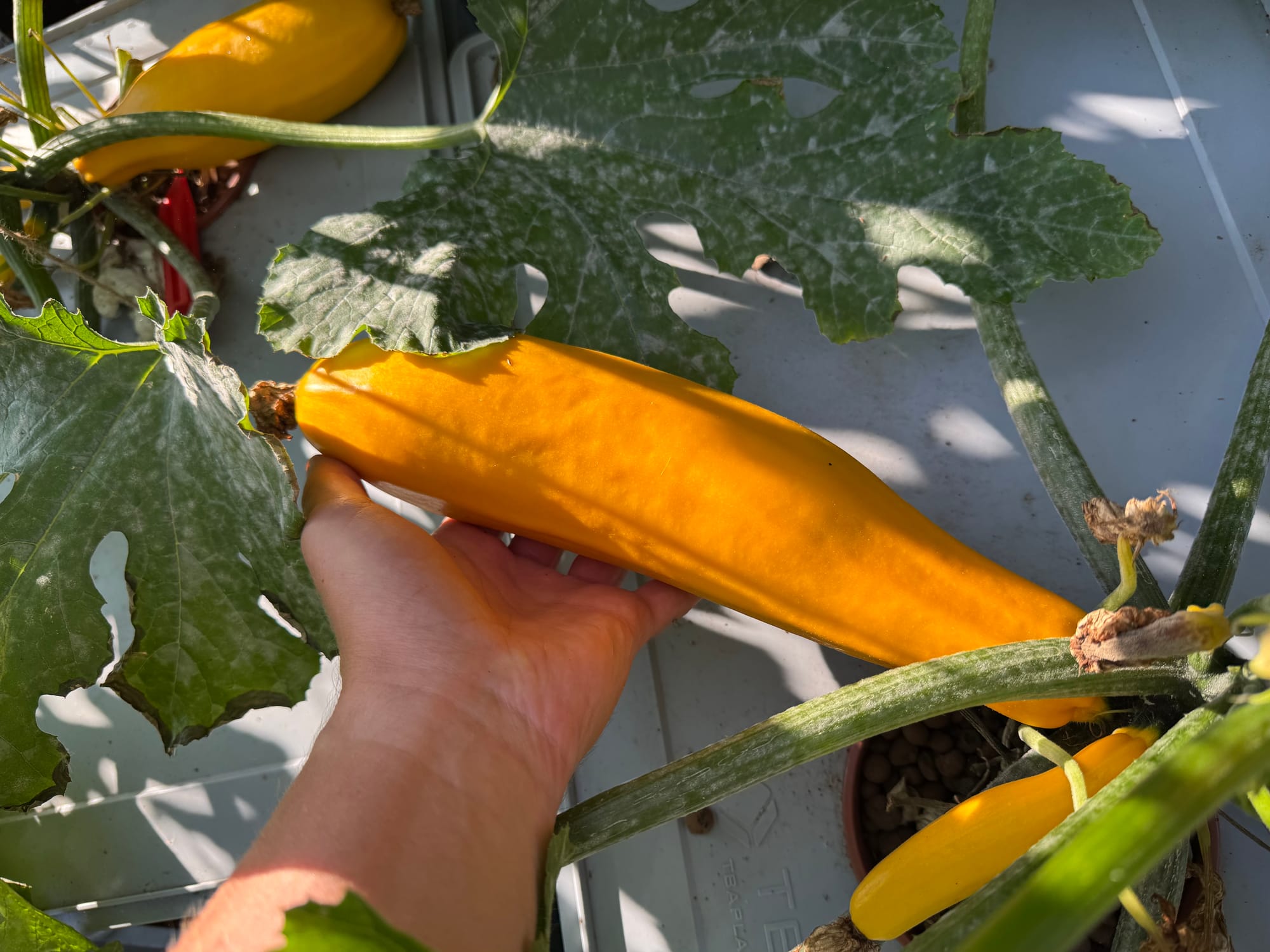
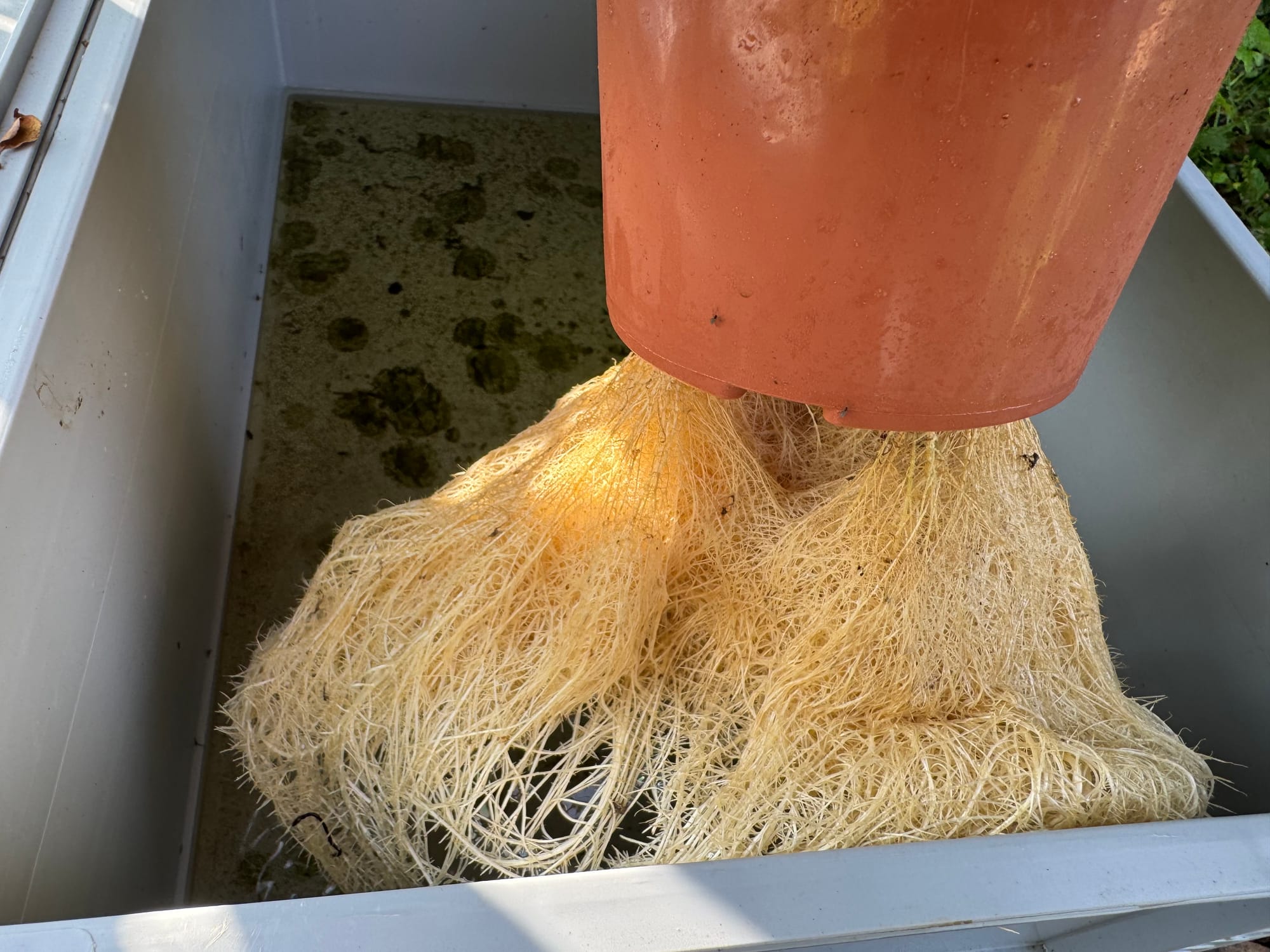
The hydroponic zucchini is a one big chungus. The plant consumed almost all the solution.
I tried cutting diseased leaves and spraying fungicide on the healthy ones, but it was pointless. September's conditions are just too harsh. I keep them around to see how long they will last, but as the nights get colder, the fruit is becoming deformed. Still, I am happy with the harvest.
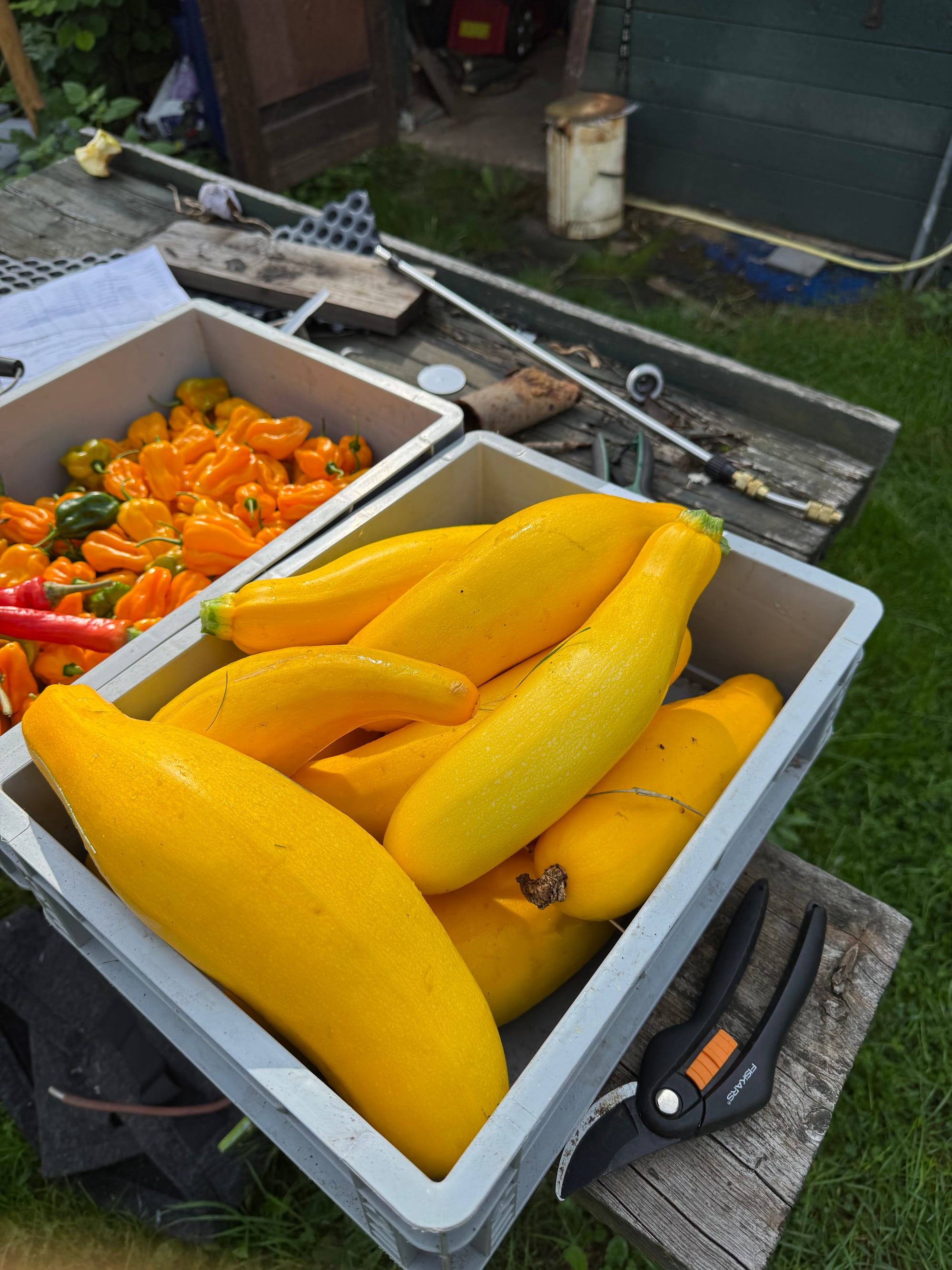
And now for the experiment. I sowed cucumbers around July 20th, aiming to have fruit by day 40. I failed, but I learned some important things. First, let's check the plants.
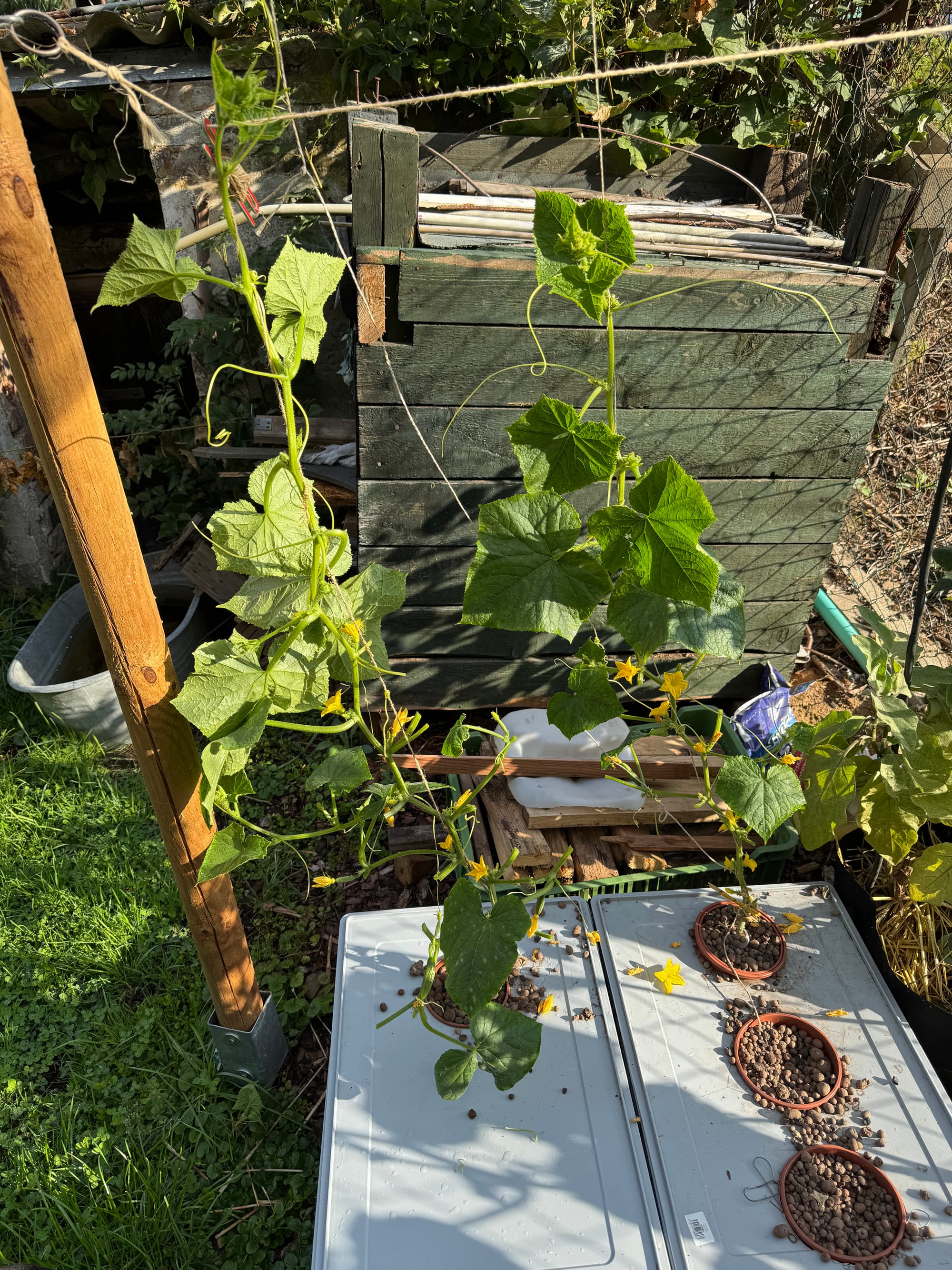
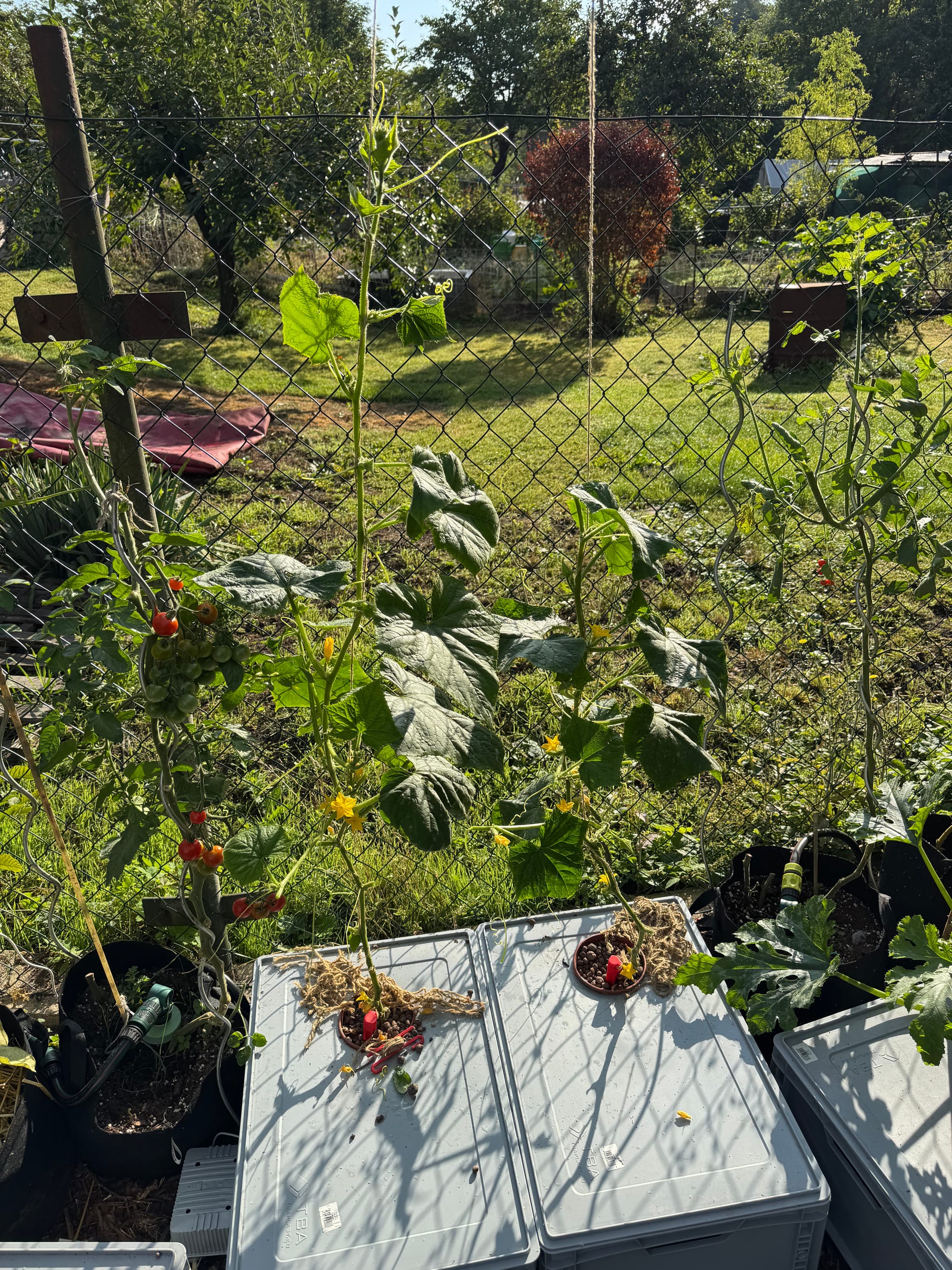
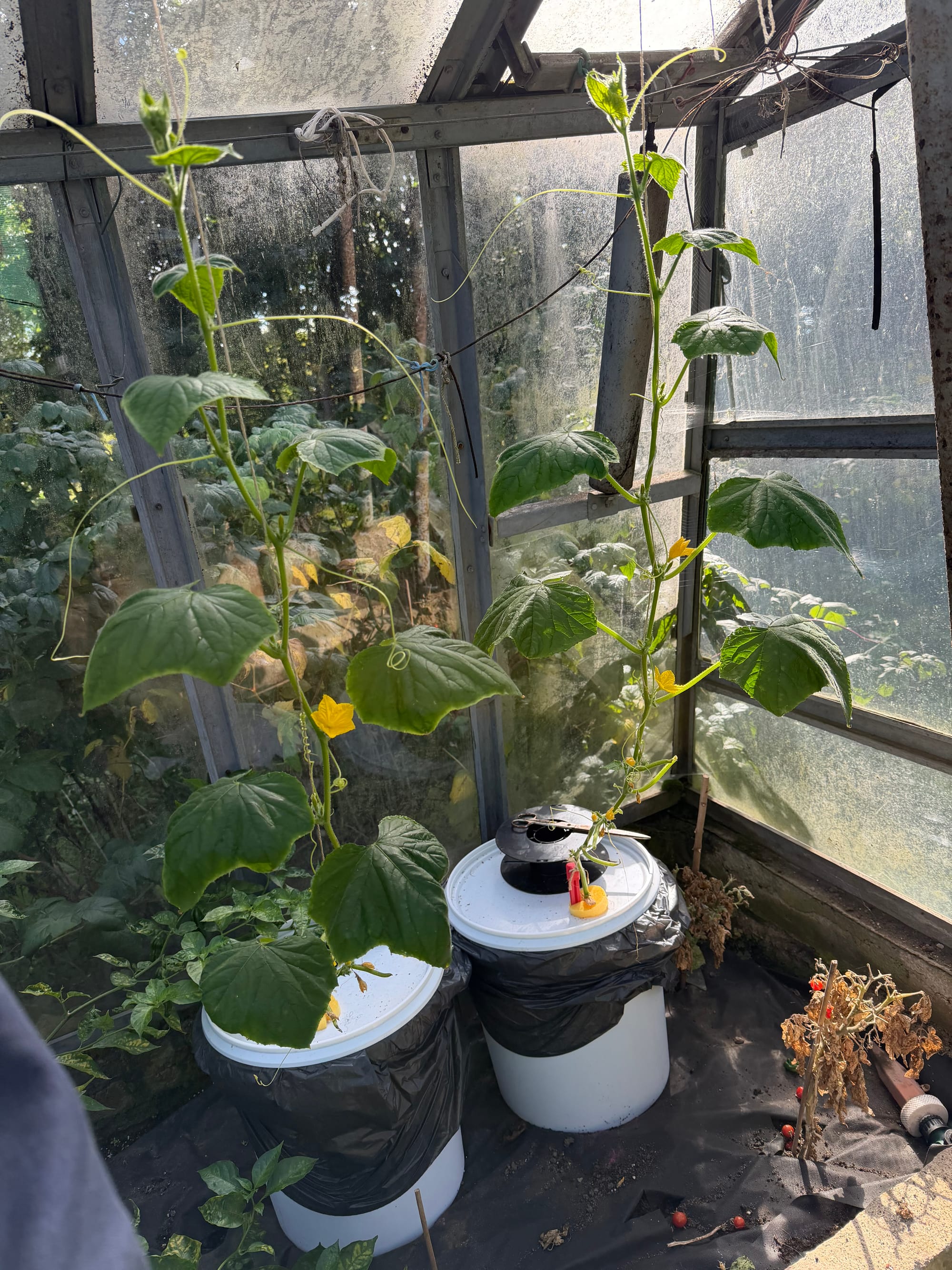
Regular Kratky vs. Oxy-Kratky vs. Regular Kratky in greenhouse.
Technically, there were fruits by day 40, just not big enough. The Oxy-Kratky cucumbers definitely outperform the regular Kratky ones in plant healthiness. The Oxy-Kratky roots are more compact and thicker, while the Kratky roots are thinner and spread across the box. I know I shouldn't have disturbed the root zone because of the architecture, but I couldn't help myself.
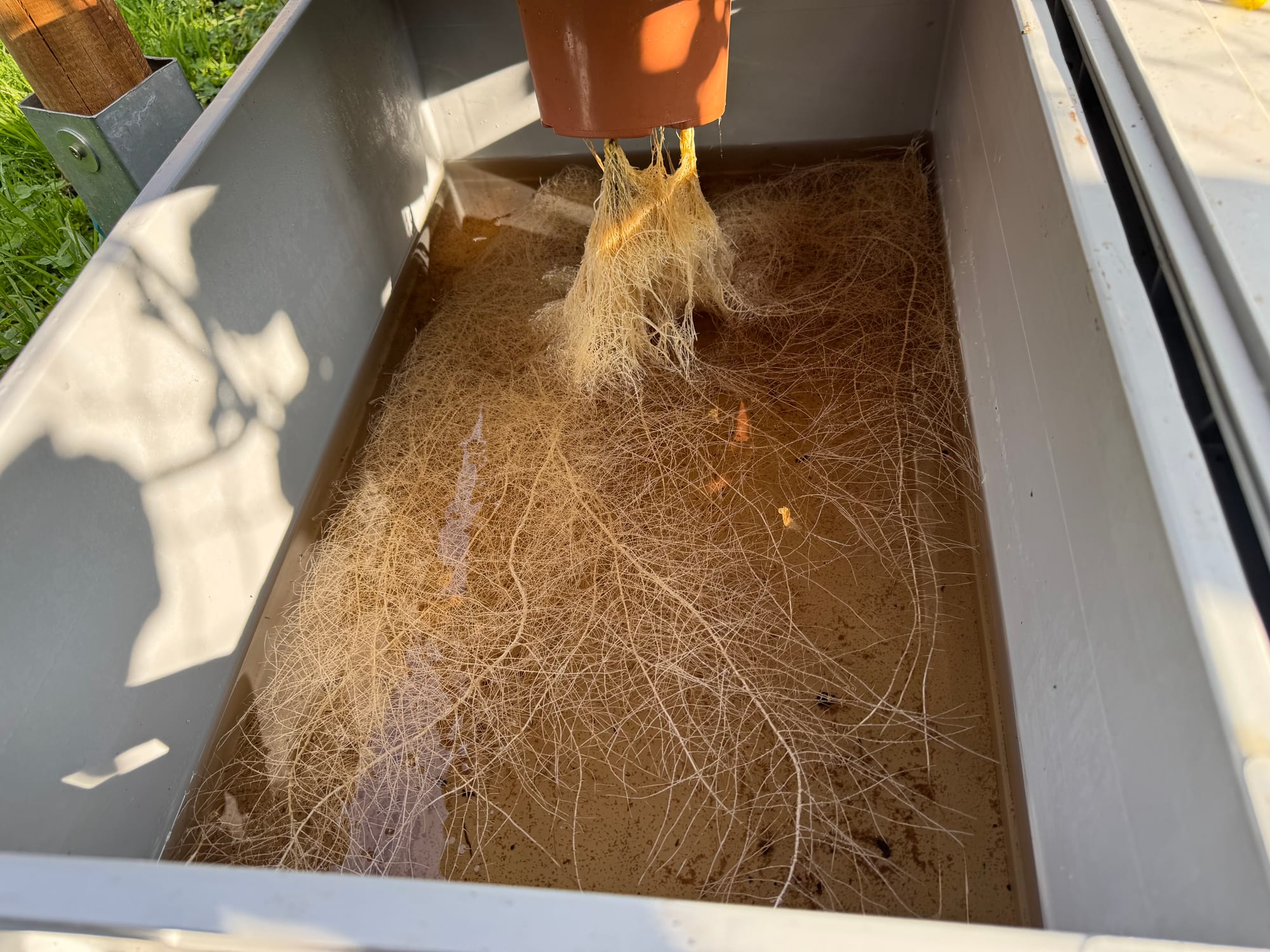
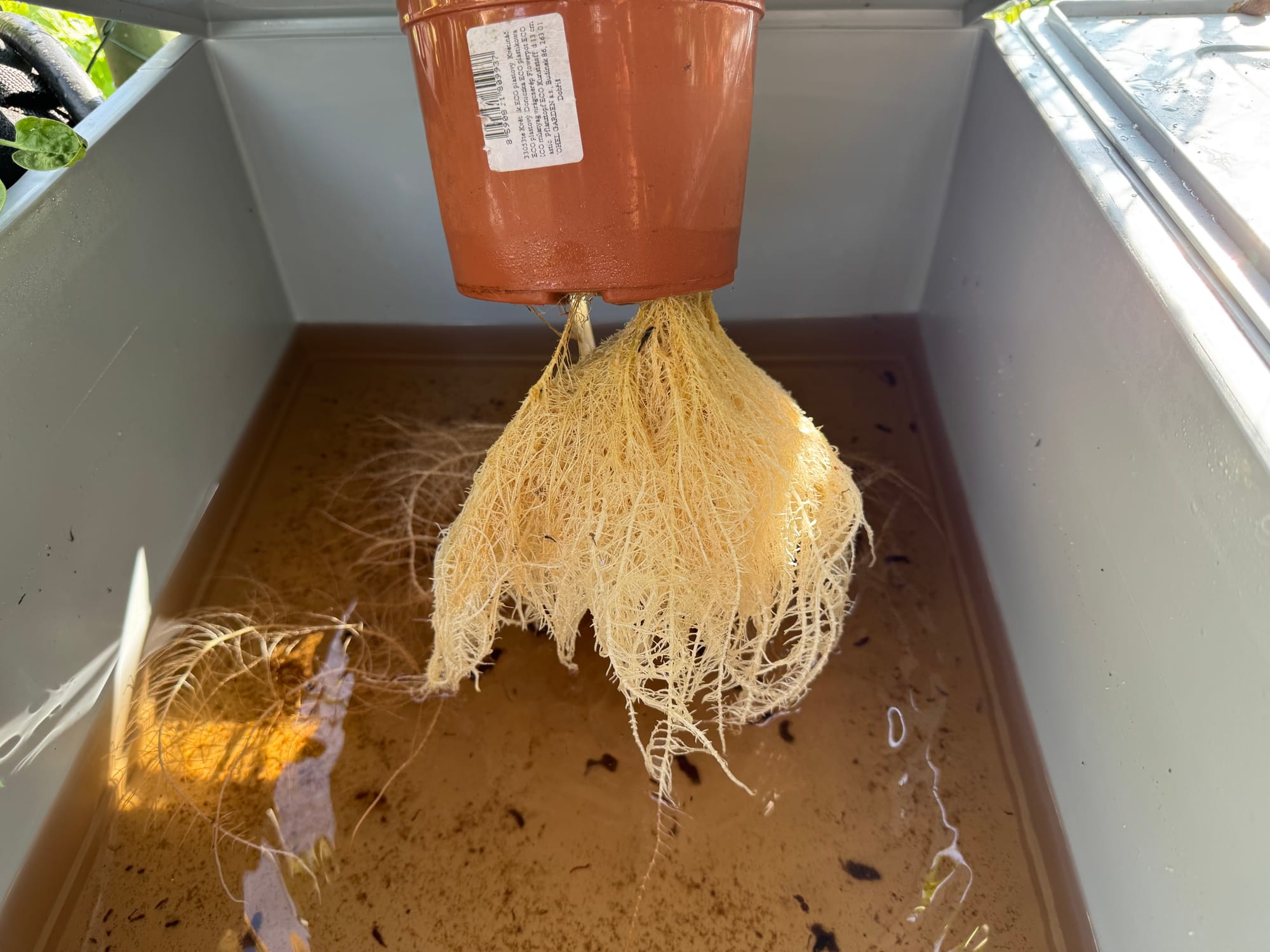
Regular Kratky vs Oxy-Kratky
When I chose the EURO box as a reservoir, I knew it could cause issues for Kratky, since salts naturally participate and settle at the bottom. A tall bucket helps create distance between roots and settled salts, whereas the EURO boxes are wide and shallow. This can cause a nutrient imbalance in later growth stages when roots touch the settled salts at the bottom.
However, I encountered a different issue. While the EC stayed stable (which is good), the pH drifted in both solution mixes, but in opposite directions.
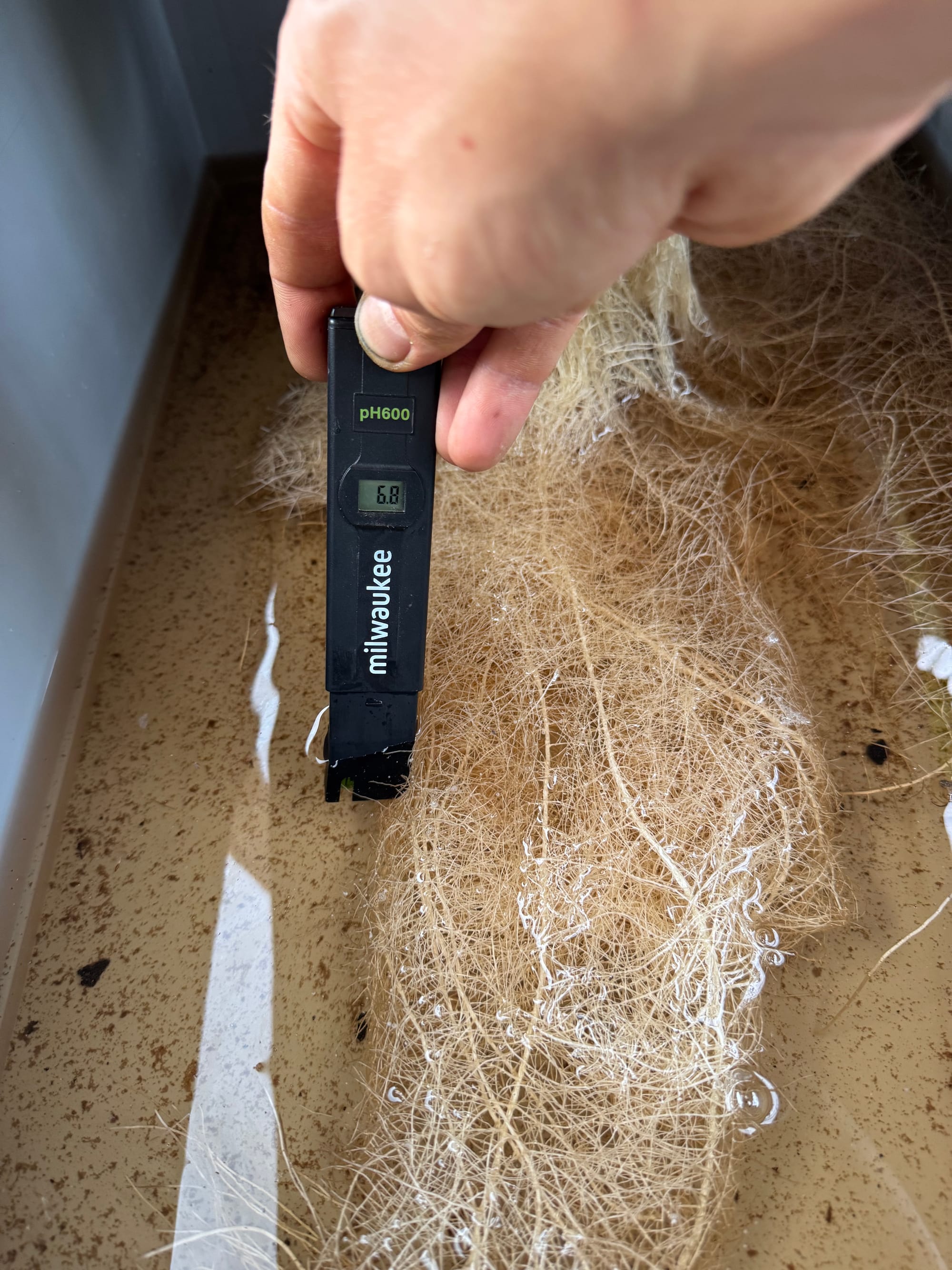
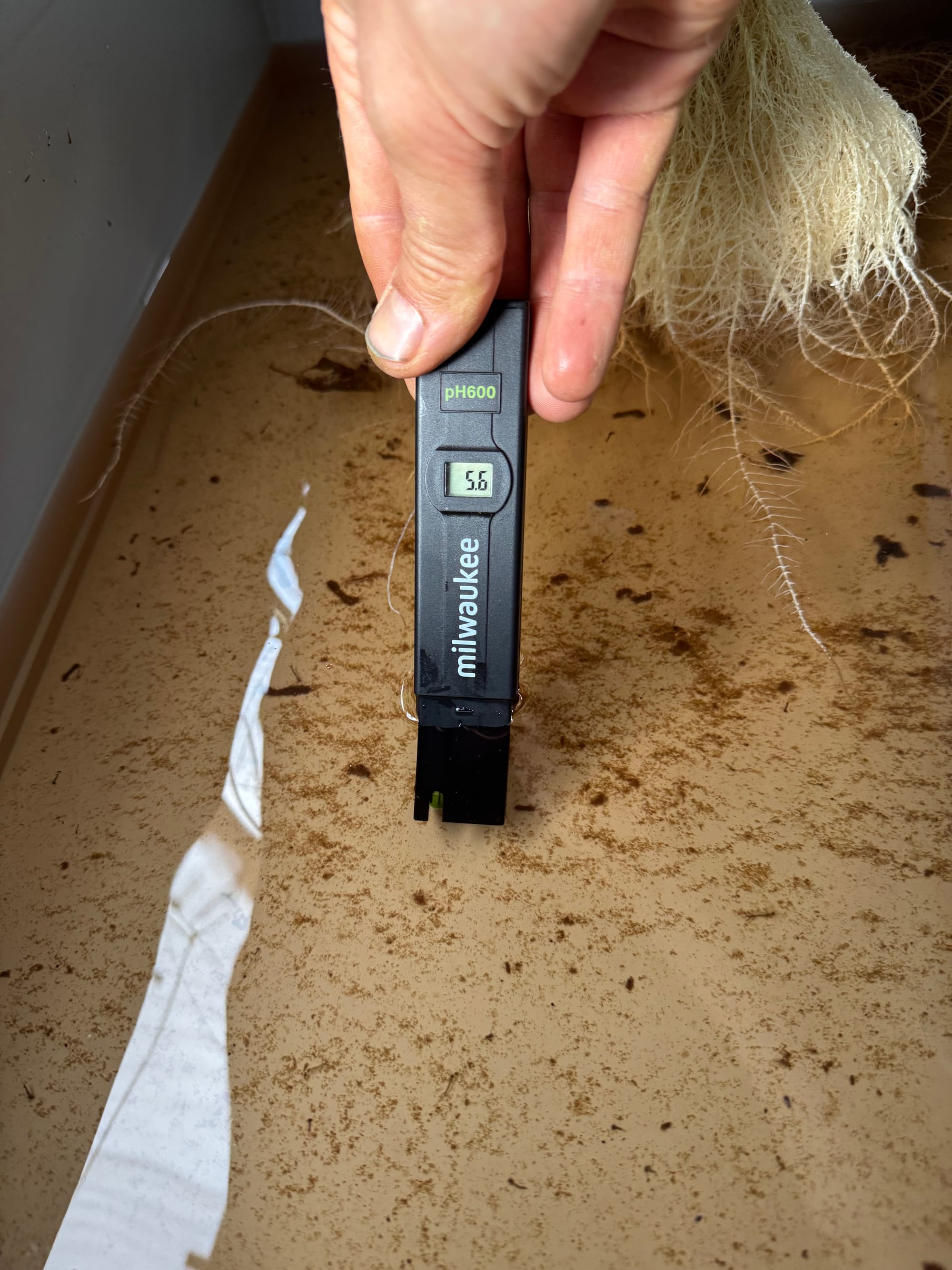
Regular Kratky vs. Oxy-Kratky
The Kratky pH drifted up, while the Oxy-Kratky pH drifted down. My understanding is that active oxygenation and movement in the Oxy-Kratky solution help roots breathe and release CO₂ into the water, acidifying it. Another factor might be microbial activity, which causes even more acidification. According to the internet, this is a common issue in deep water cultures (DWC).
On the other hand, Kratky is passive—no active oxygenation. Oxygen stays out of the solution, and nutrient uptake plus evaporation cause the solution to become more alkaline.
These pH shifts affect nutrient availability, which leads to other problems. Heavy stuff, this pH. And while I barely have any fruits, I am pleased with the results. All plants, regardless of system, look healthy and vigorous. I'll definitely use hydroponics for cucumbers again next year. Just imagine how good they'll look in May or June.
But June is far away. Right now, I have to move them into the greenhouse to mature.
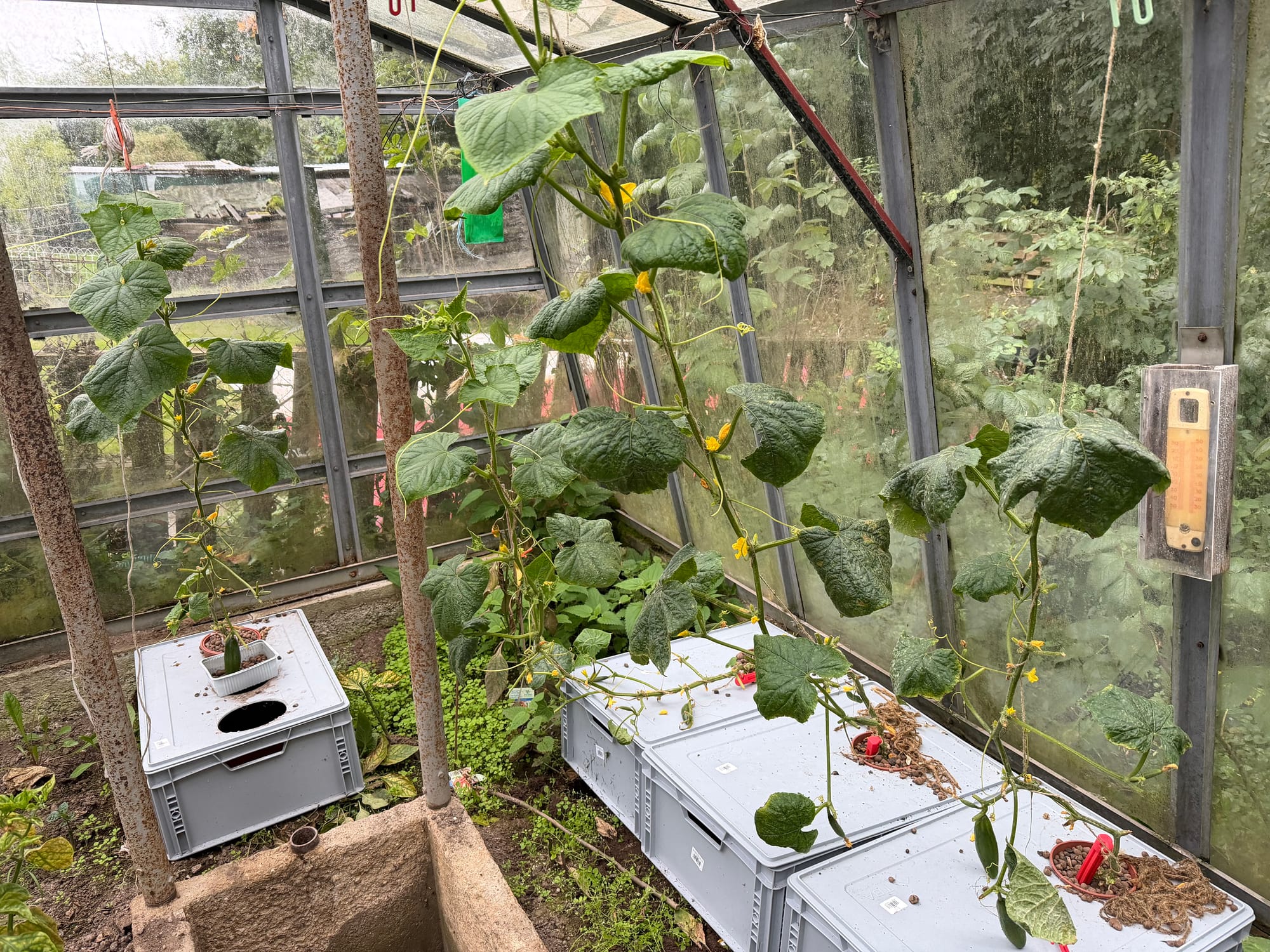
the standing exotics
Let's wrap this up with my favorites: the #4011s. This is the last month for my banana plants. They can survive freezing temperatures just fine, but the leaves cannot. The leaves will die as soon as the thermometer hits zero. I am really glad I planted them in my garden, especially the Ever Red variety. They filled in otherwise dead spots and are just great eye candy.
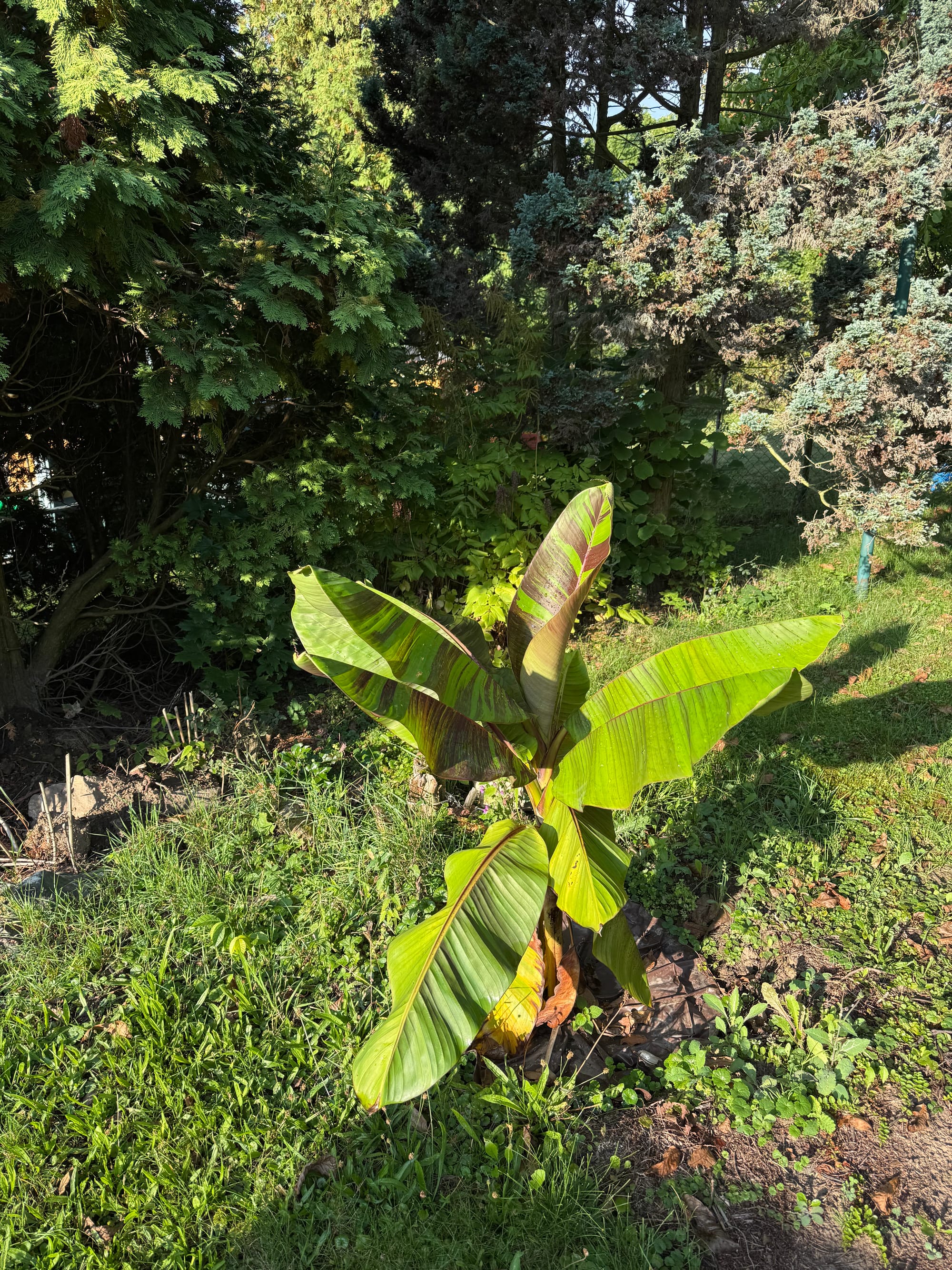
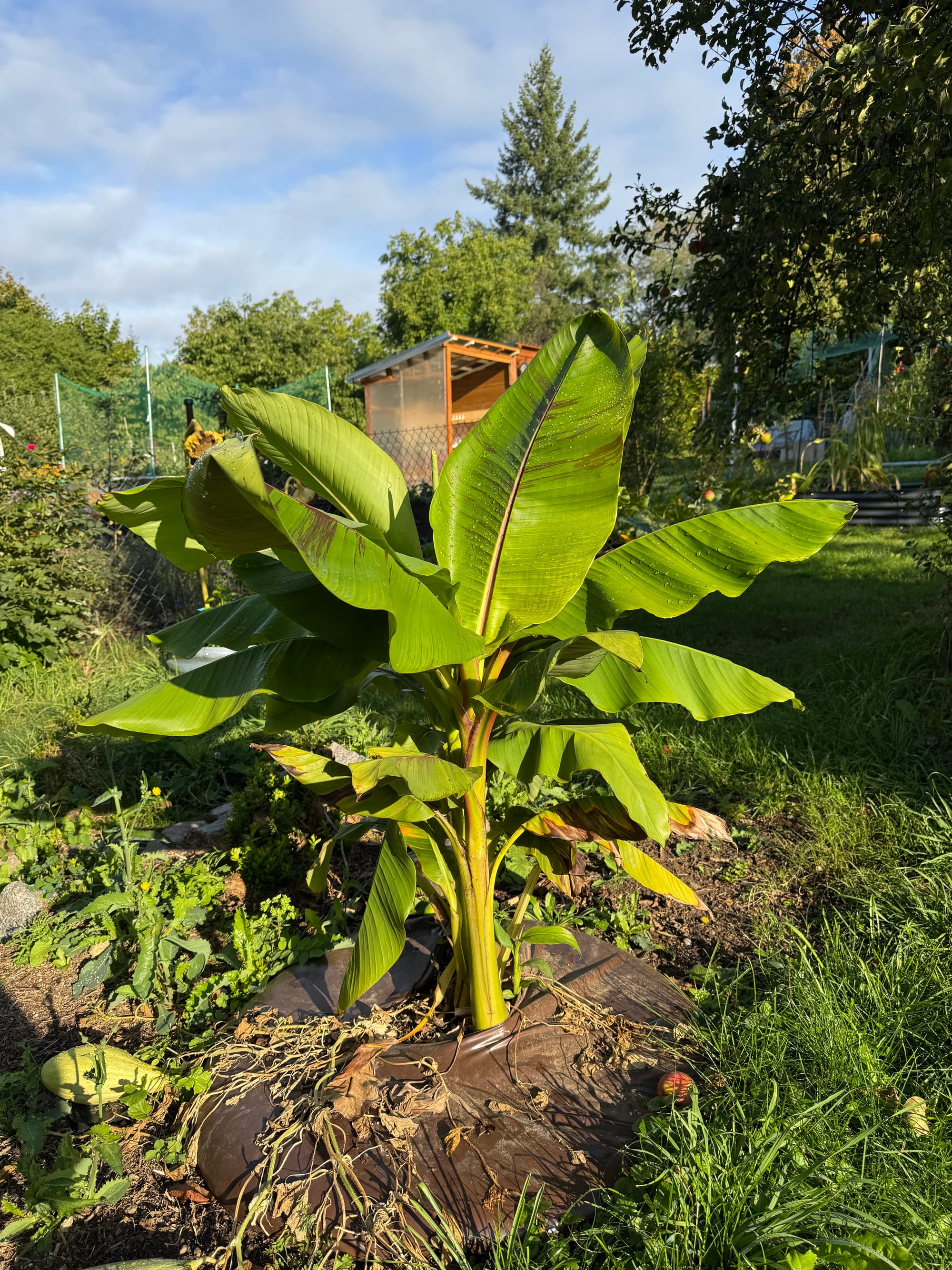
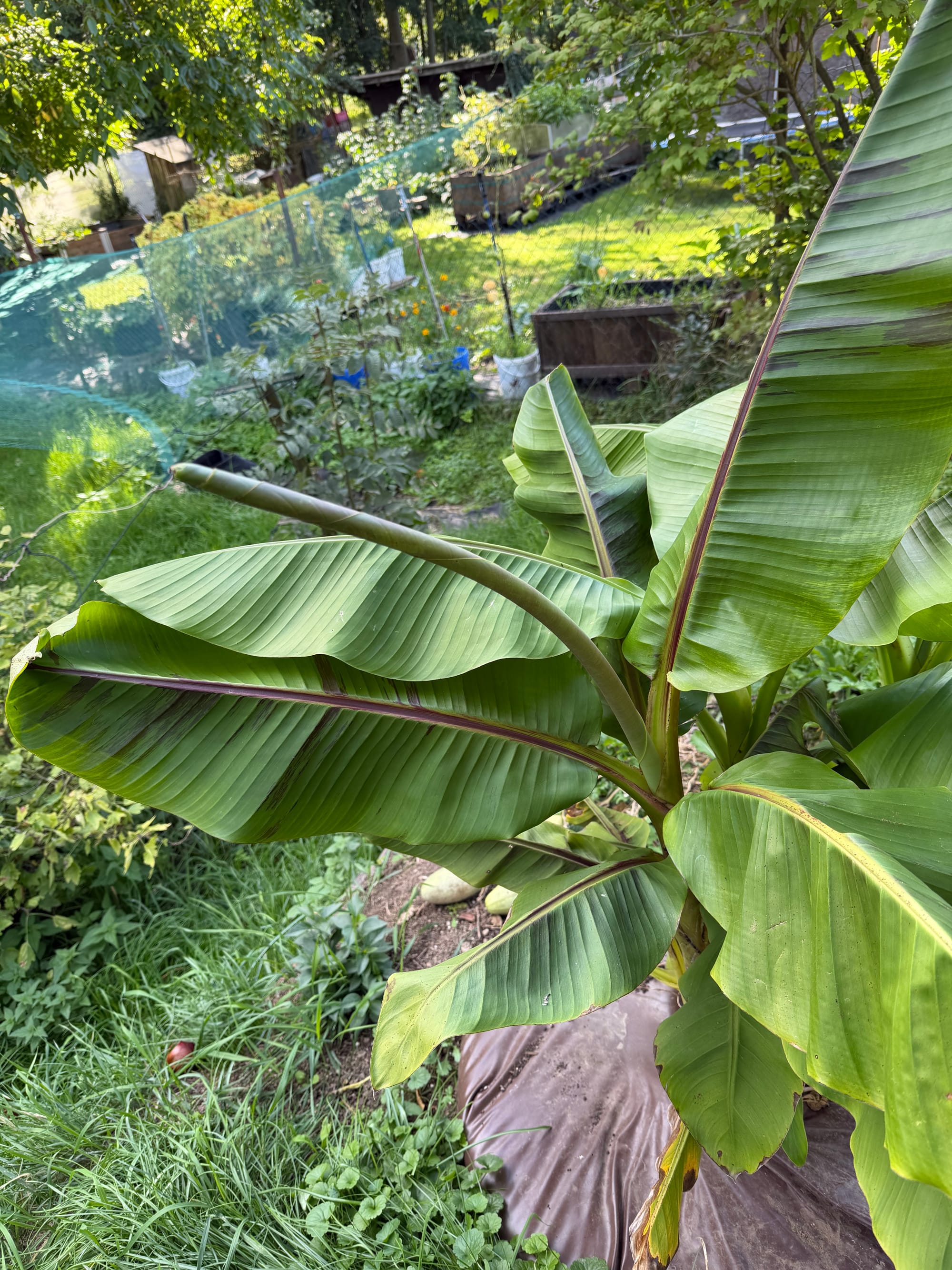
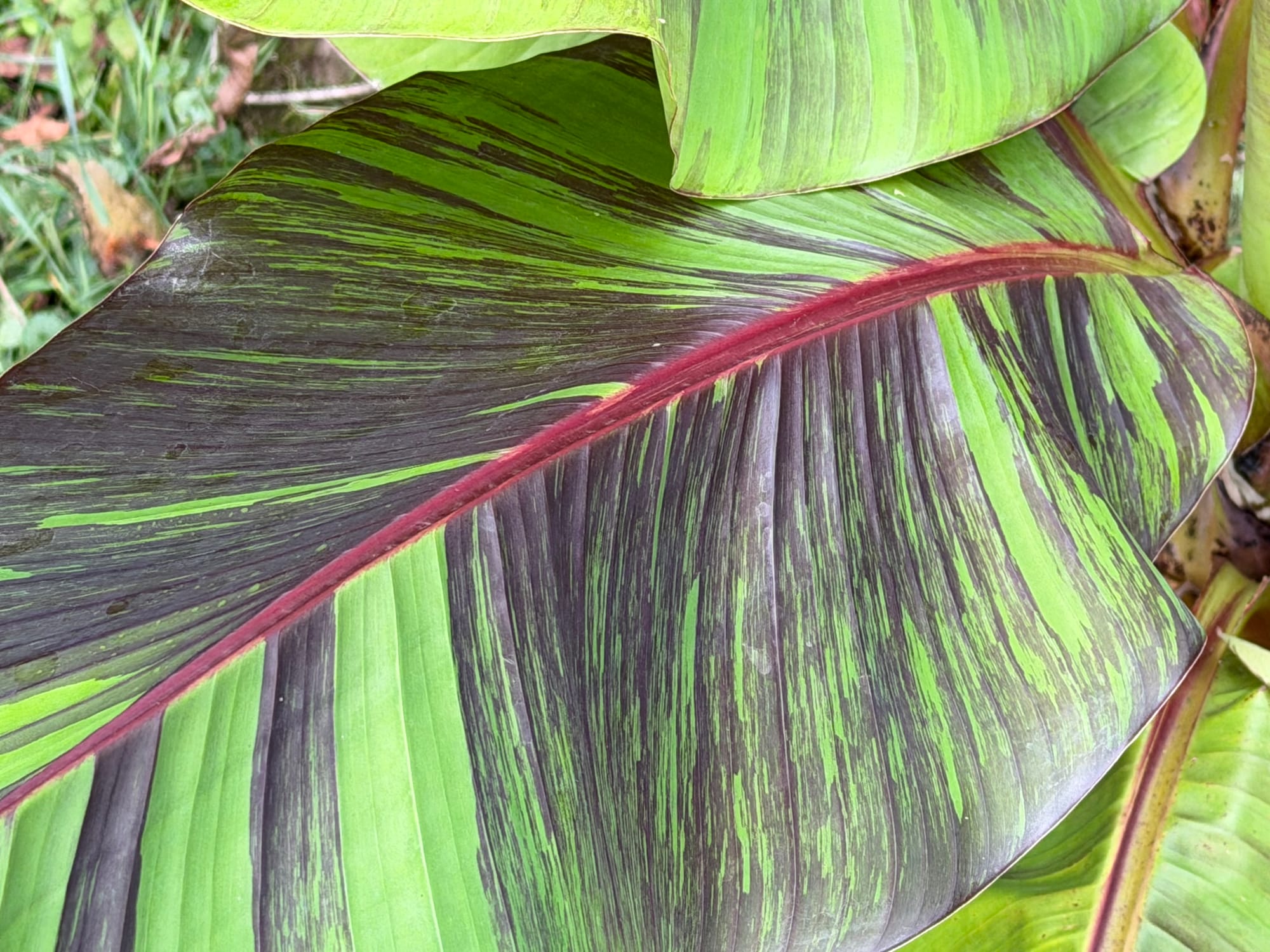
I have a few overwintering strategies: I will take one of the small offshoots home, dig out one pair and keep them in the shed, and leave the rest outside wrapped in cushions and dry leaves. Ideally, the pseudo-stems will survive the winter, and new leaves will grow from them like nothing happened.
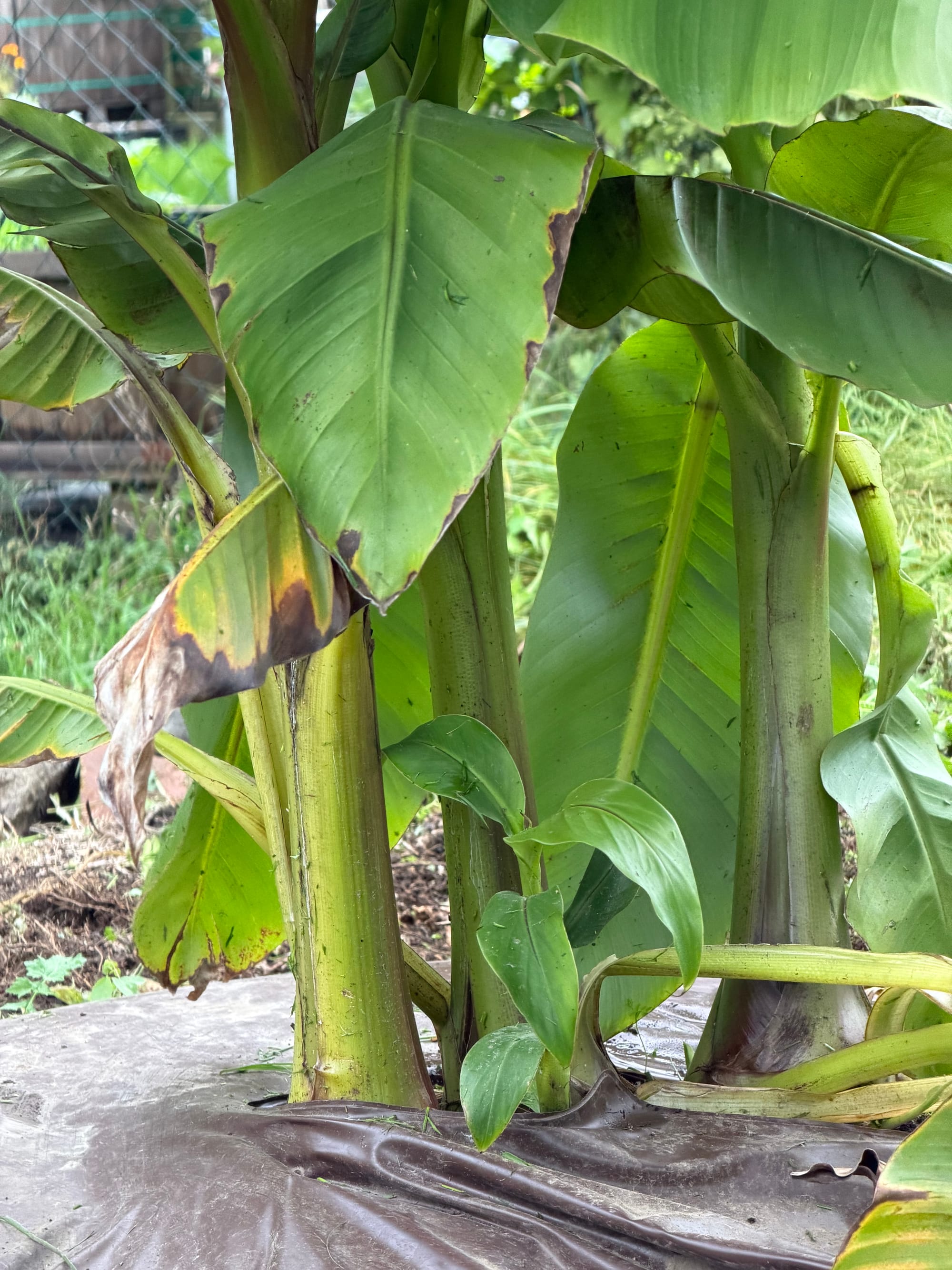
By the way, I harvested the only melon I had. The plant died, and the melon was bitter. End of story. Yet another year full of melon disappointment.
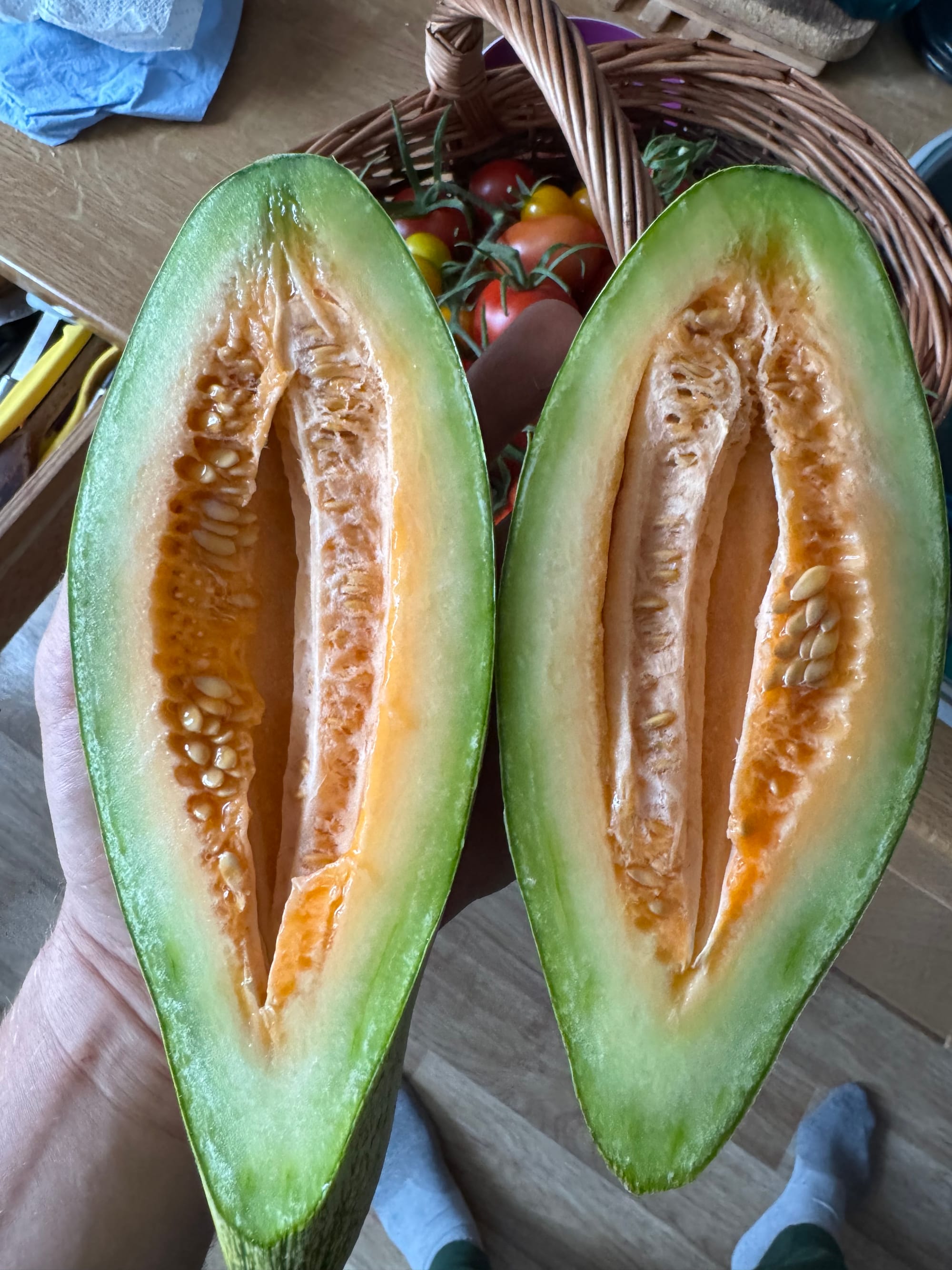
The season was coming to an end, sooner than last year. Overall, it felt shorter. Cold May, rainy July, and a September full of temperature swings didn't help. I have some plans for October. I ordered some gooseberry trees and blueberry bushes to expand the berry collection.
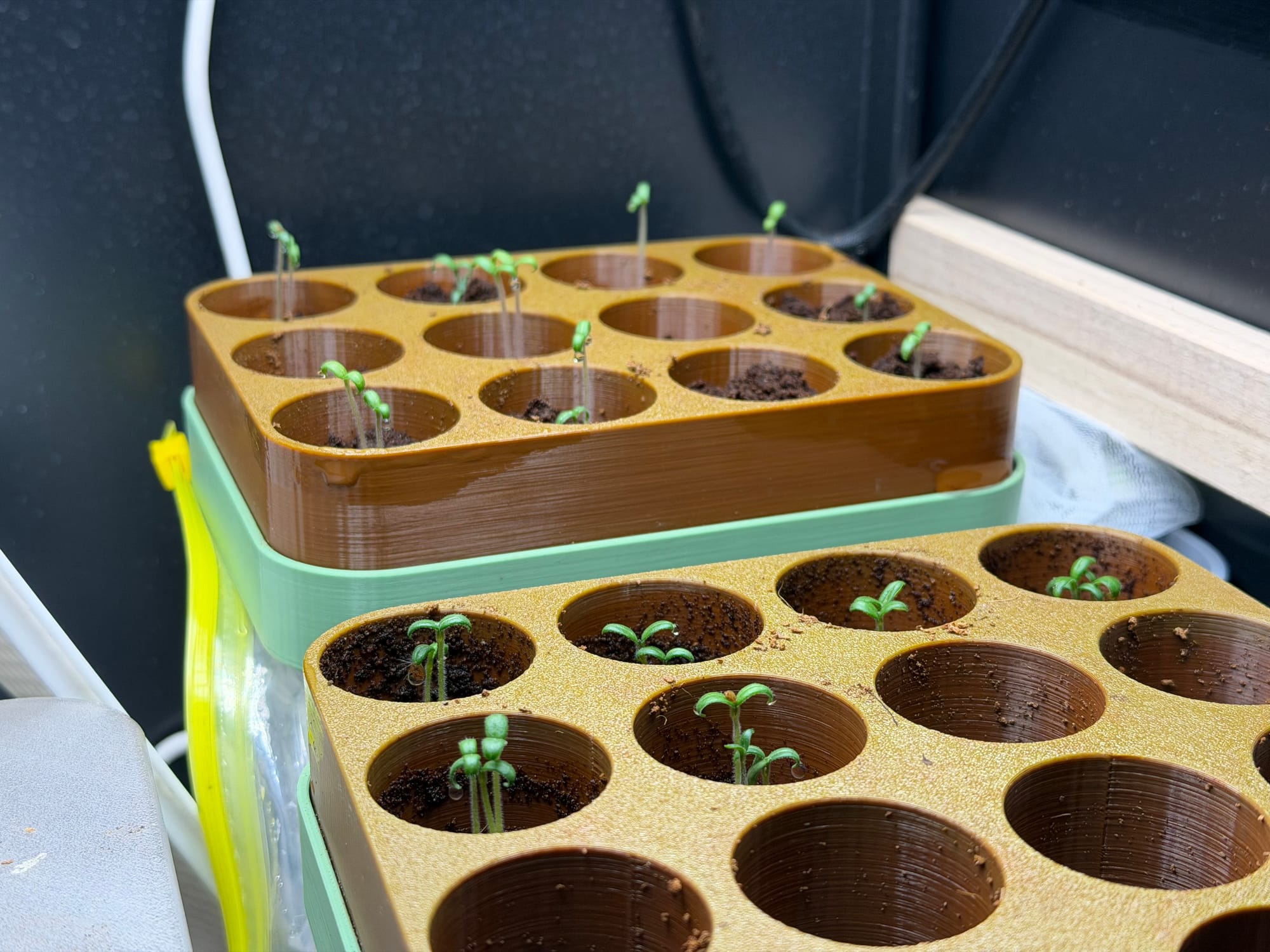
For the winter season, I picked out some Micro-Tom and Venus tomatoes, and two bell peppers. I need to replace the side walls of my BROR and improve the ventilation. The outdoor garden season might be ending, but it is the spring of the indoor season!
Member discussion